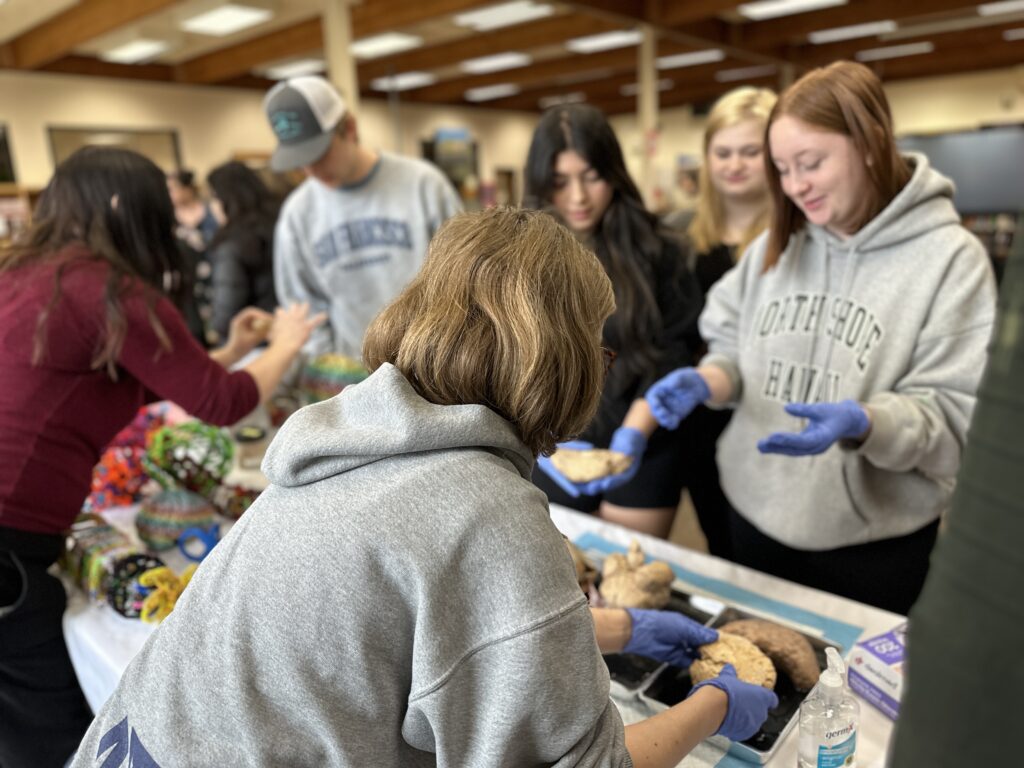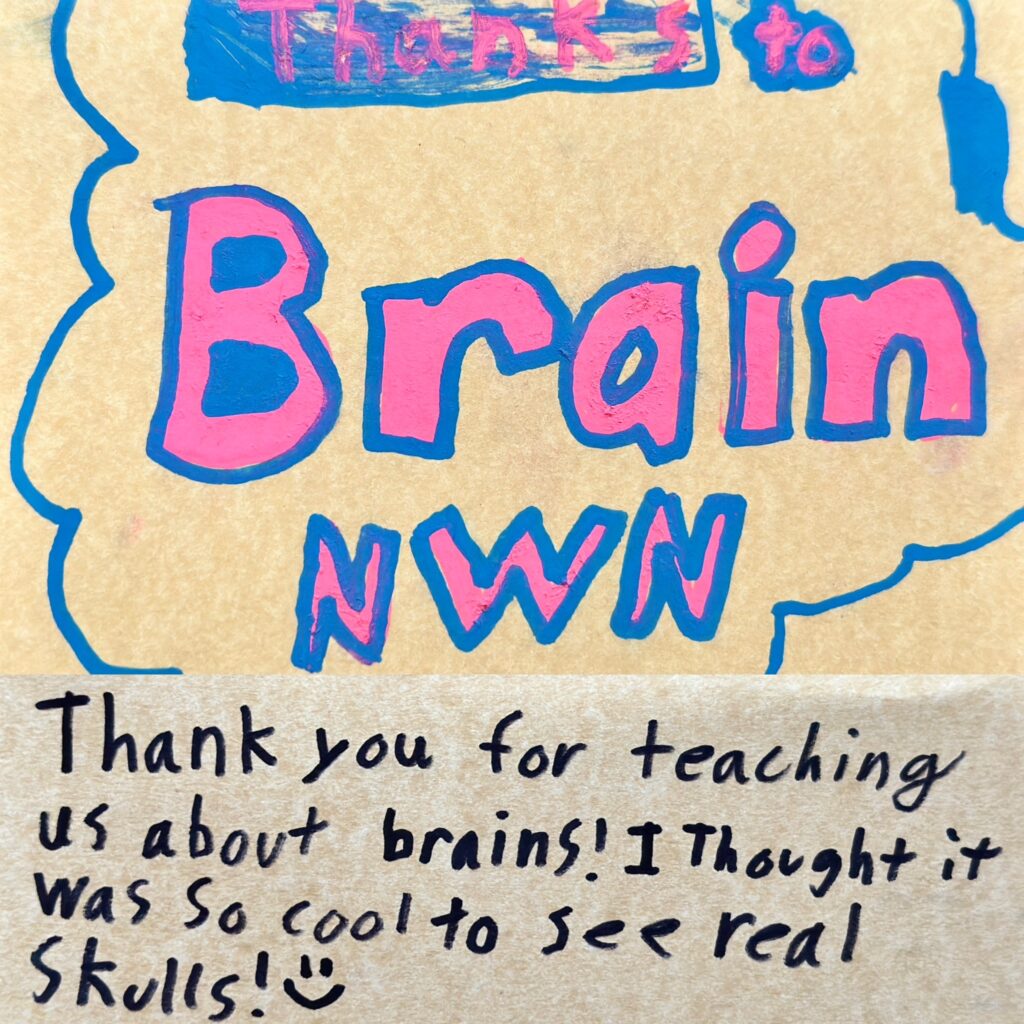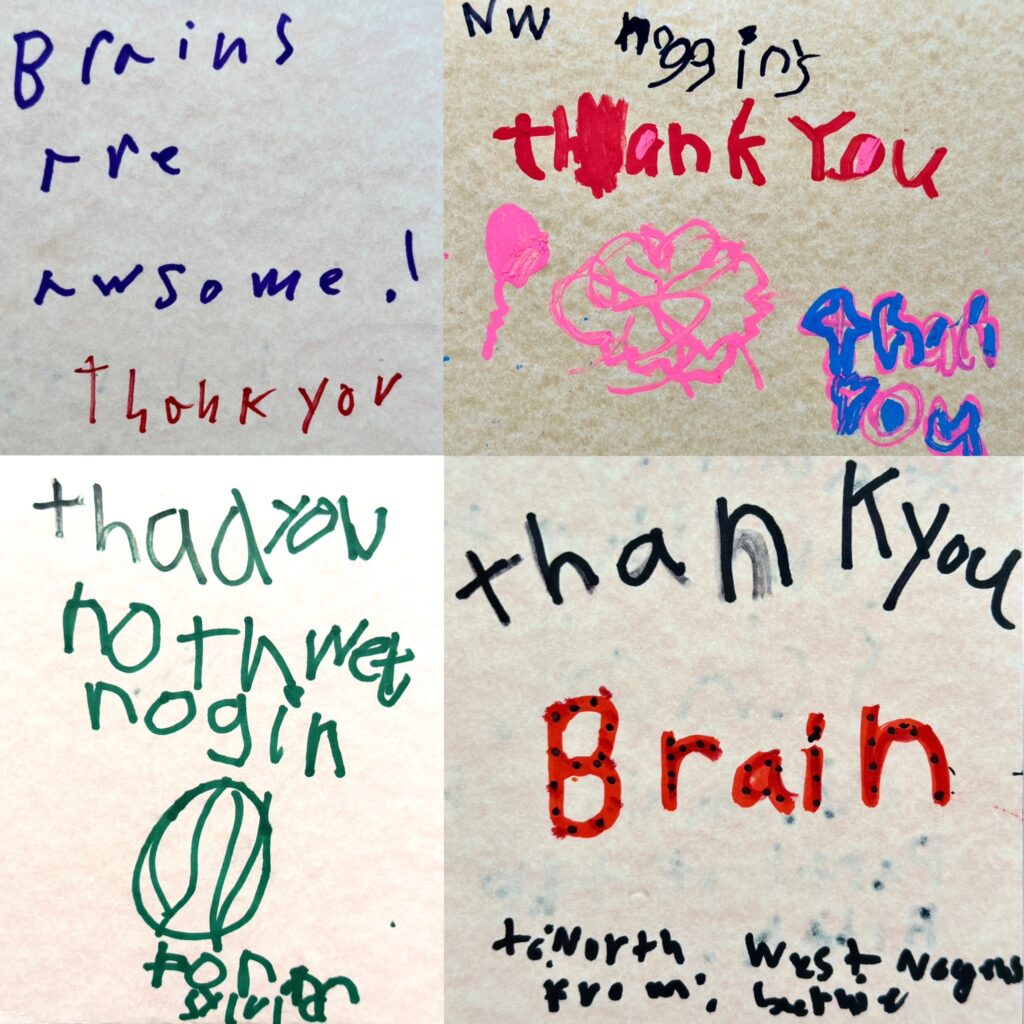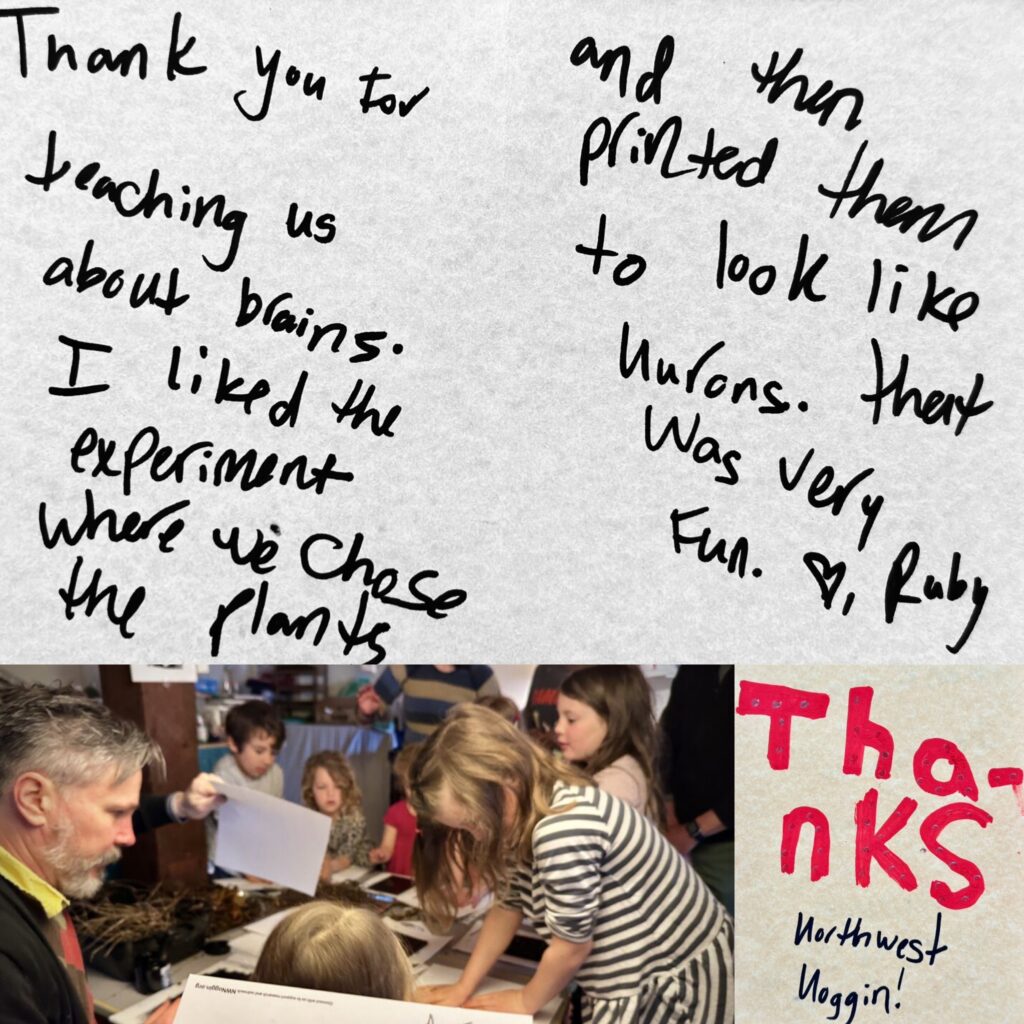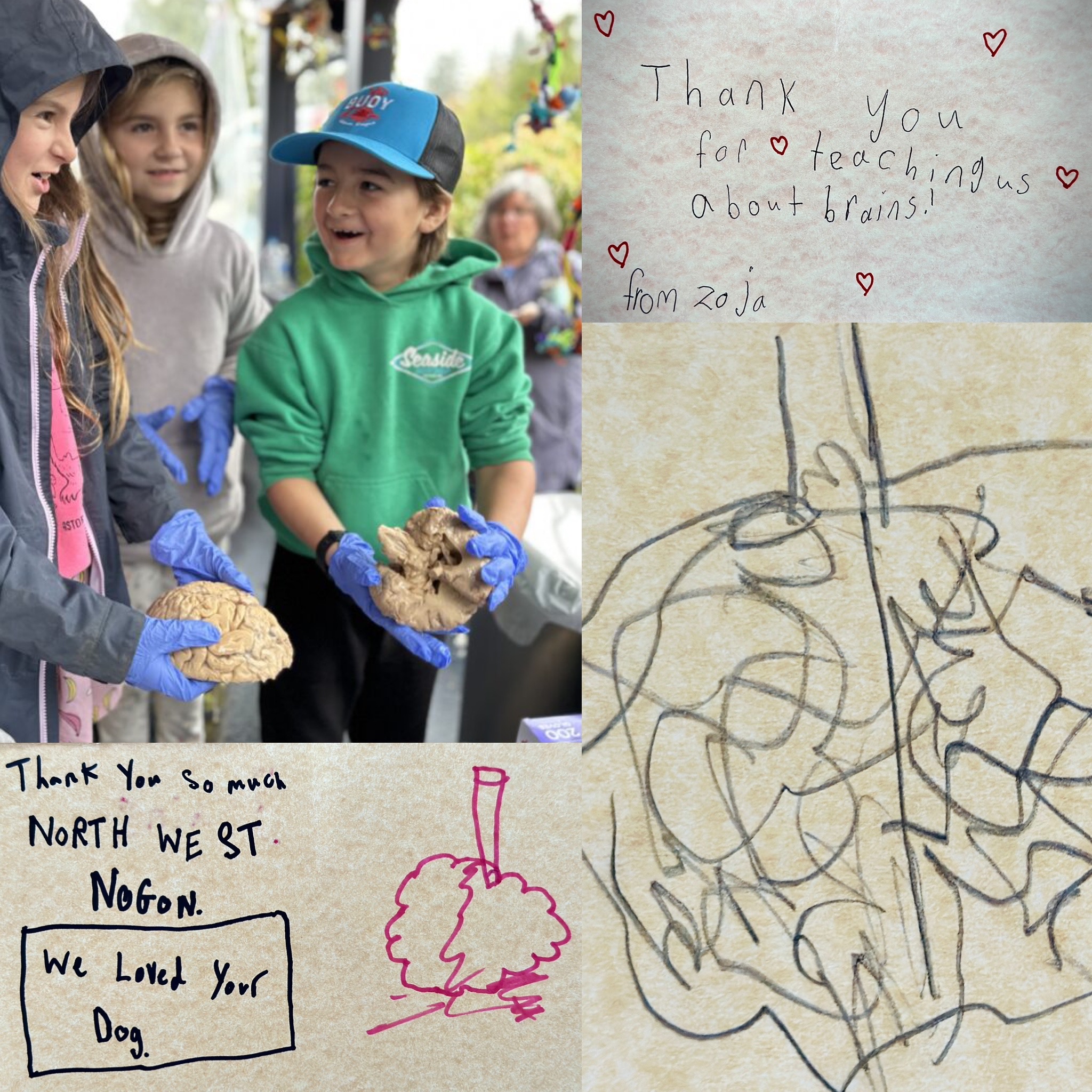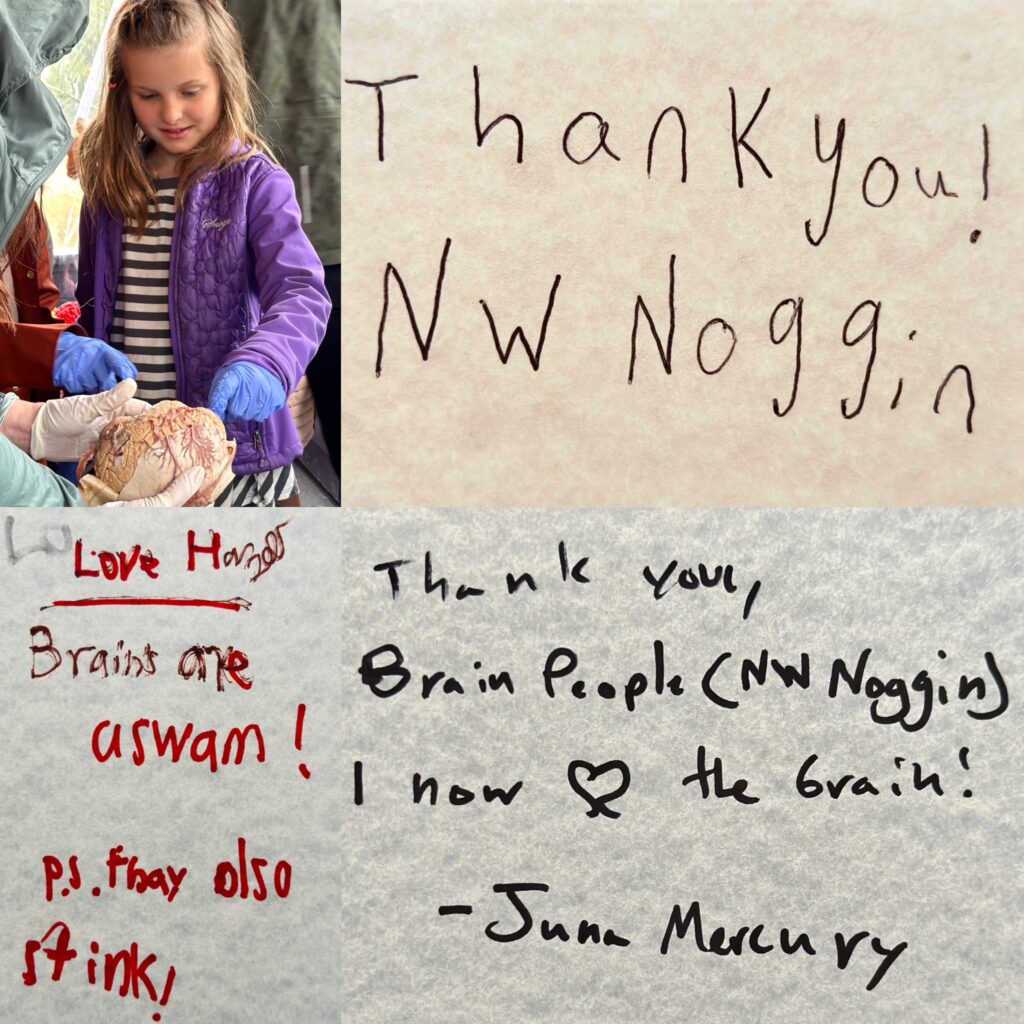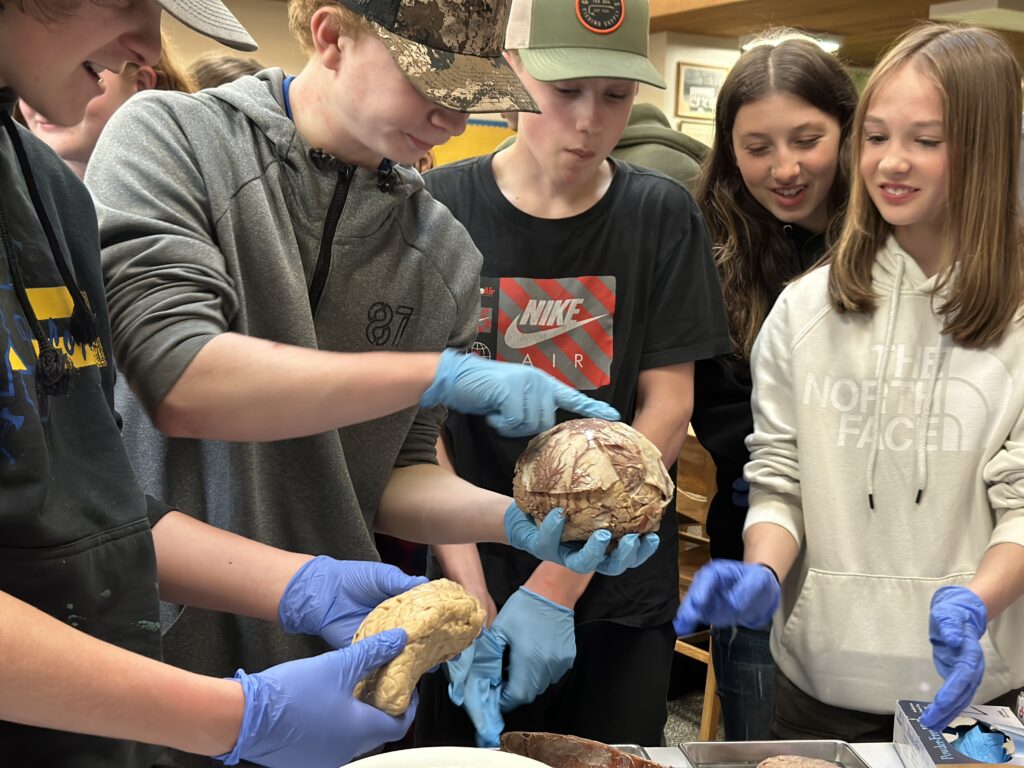
Our all-volunteer Northwest Noggineers hit the road this spring, leaving busy labs and lecture halls for the wet and stormy mouth of the Columbia River, to learn from bar pilots, cardiologists, graduate students in neuroscience, curious pre-K kids and hundreds of engaged 9th – 12th graders with challenging questions from Knappa and Astoria Public Schools.
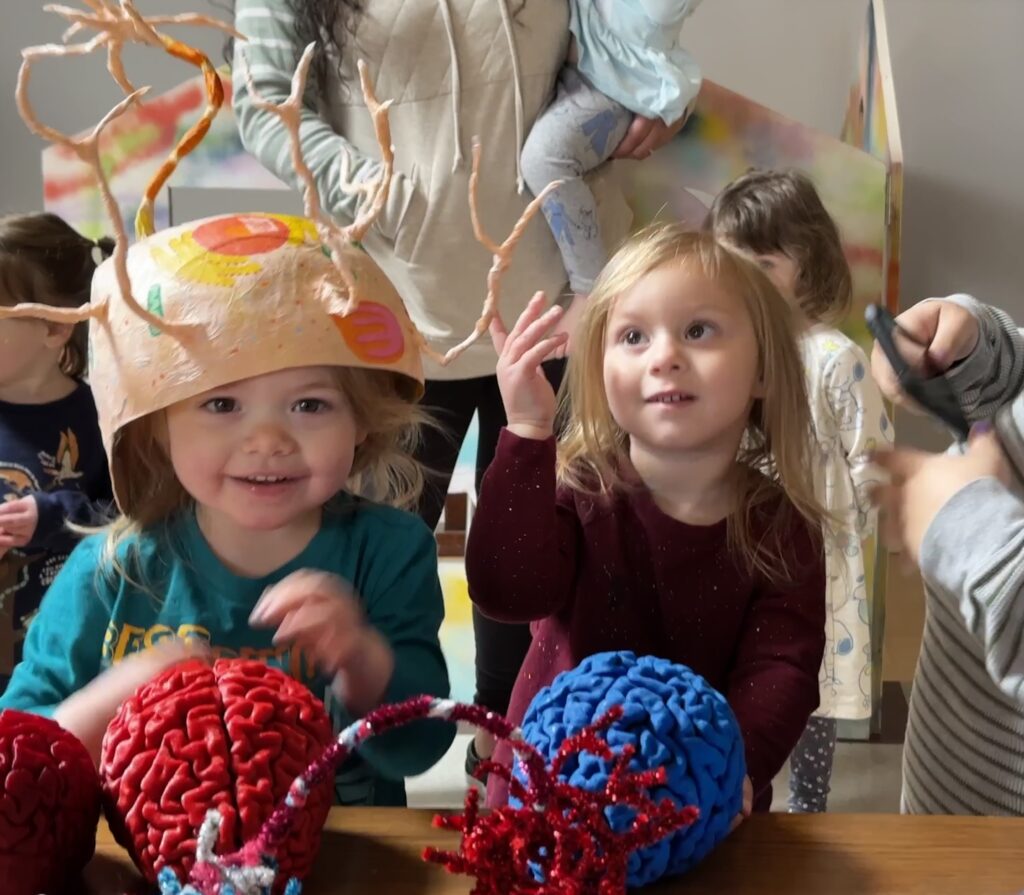
We LOVE to escape the narrow confines of academia to hear from people with knowledge and experience we do not have, and discover where our own stories and research might connect through discussion, art making, questions and of course direct examination of brains!
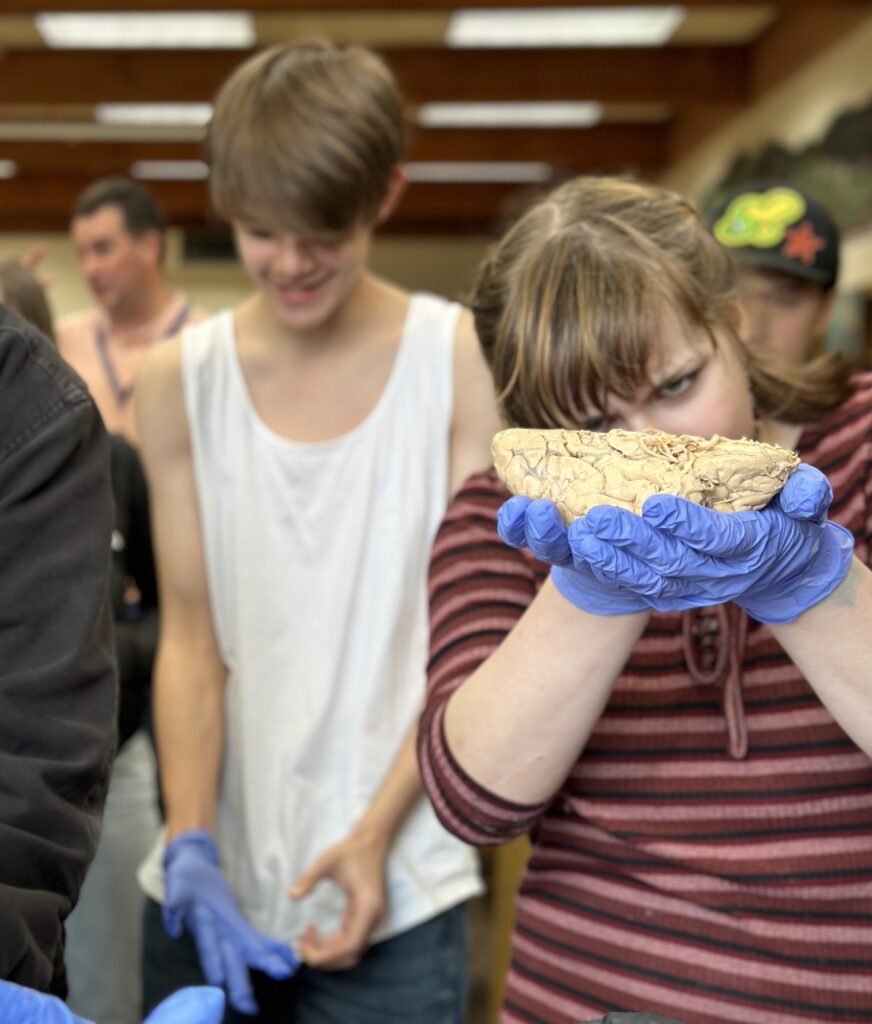
The connections we’ve made have grown and deepened over the years. Since 2019 we’ve been invited to return to Clatsop County every year, with housing and food generously provided by local businesses and community organizations!
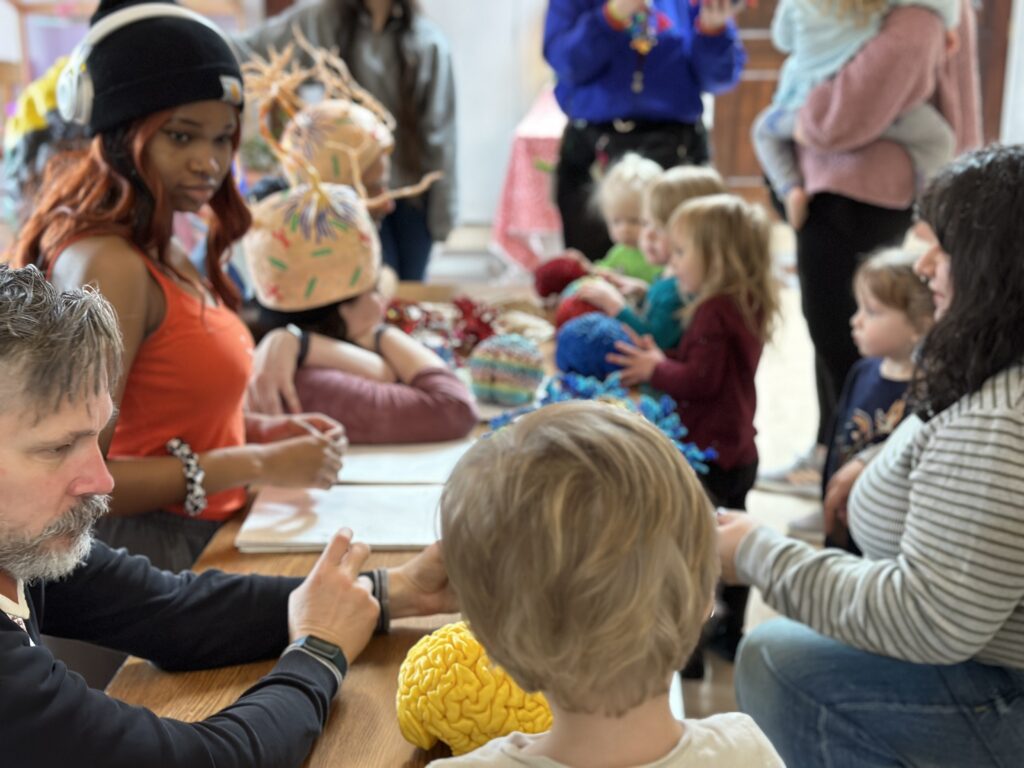
LEARN MORE: Viking, Shark, Fishermen & Bandit Brains!
LEARN MORE: Clatsop Community Cortex
LEARN MORE: North Coast Noggins: Art, Alevins & Brains!
LEARN MORE: Accumbens in Astoria
LEARN MORE: Synaptic Community Connections
Huge thanks to Andrea Gonzalez and Meredith Peyton from TRIO Clatsop for arranging our rooms at the incomparable Y Dormitory and Rosebriar Mansion, both in downtown Astoria, with meals provided by the legendary Fort George Brewery, Peter Pan Market, Good to Go and the Astoria Coop!
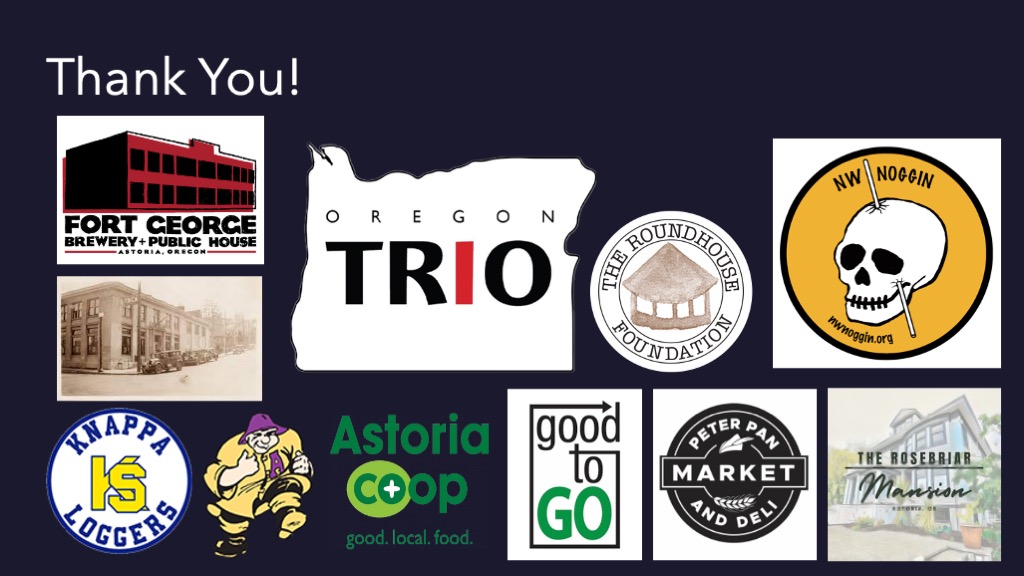
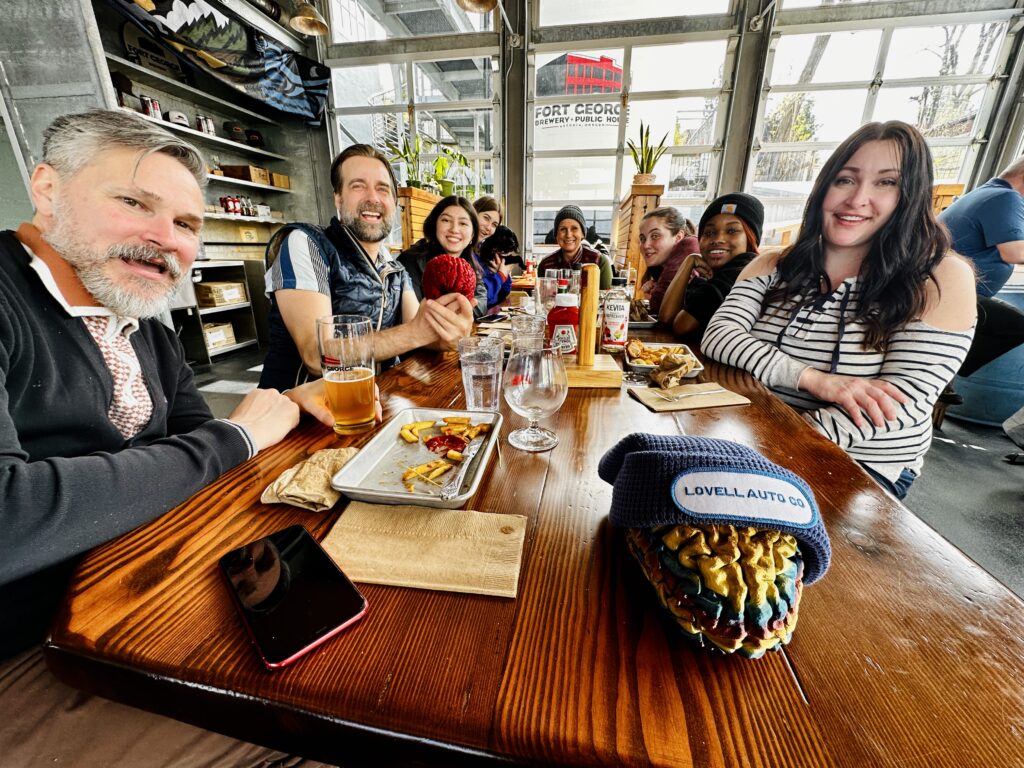
Eleven exceptional outreach participants from Portland State University made the somewhat treacherous trek west along highways 30 and 26, through spring snow, hail and driving rain. Big thanks to Tonia Bautista, Kai Hosea, Martin Lemke, Rosenbaum scholar Josie Borden, Isabella Starr, Nathalie Rios Carreon, Becky Hunt and McNair scholars Kadi Rae Smith and Chad Alexander for volunteering their enthusiasm and expertise!

Signal from Noise
We kicked off our week on the North Coast with a free public talk at the Fort George Brewery on wave energy in rivers, hearts and brains!
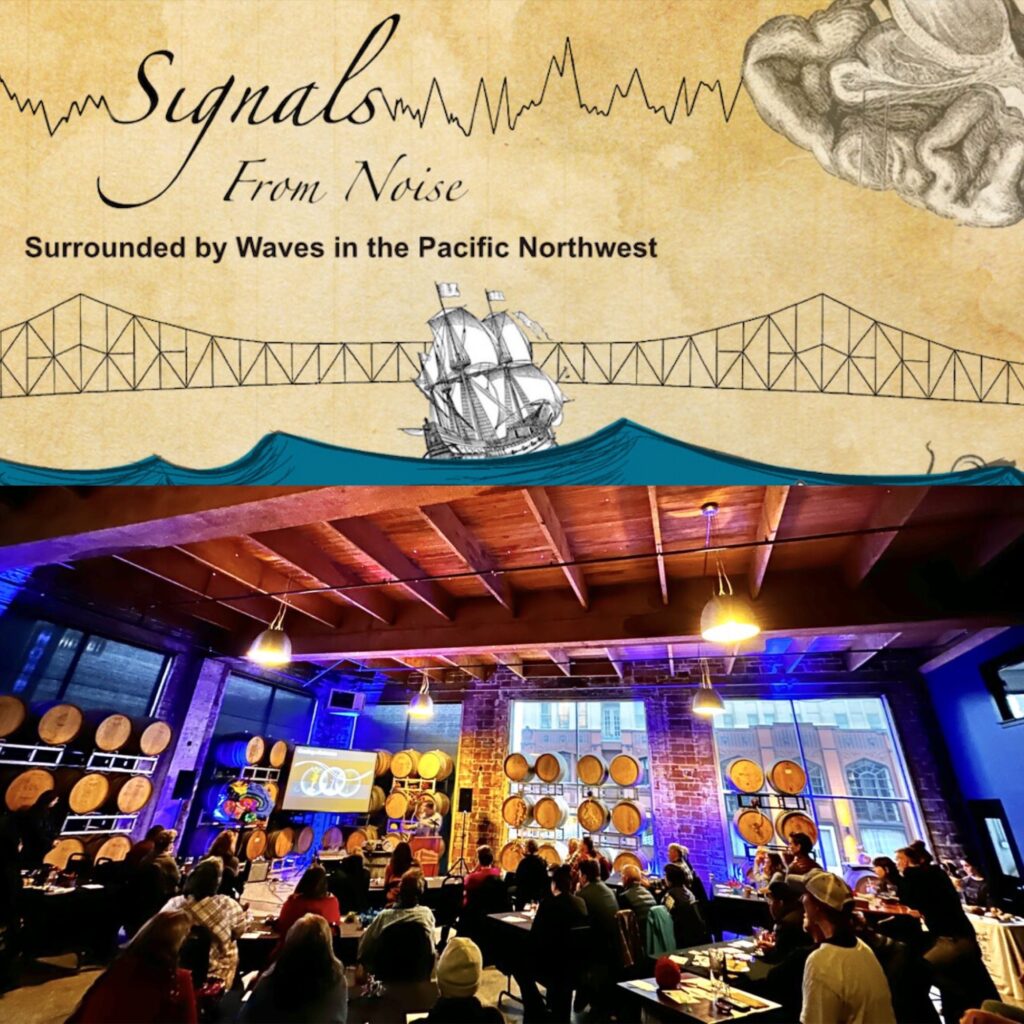
Learn ALL about it – and measure your jugular venous pressure! – at the link:
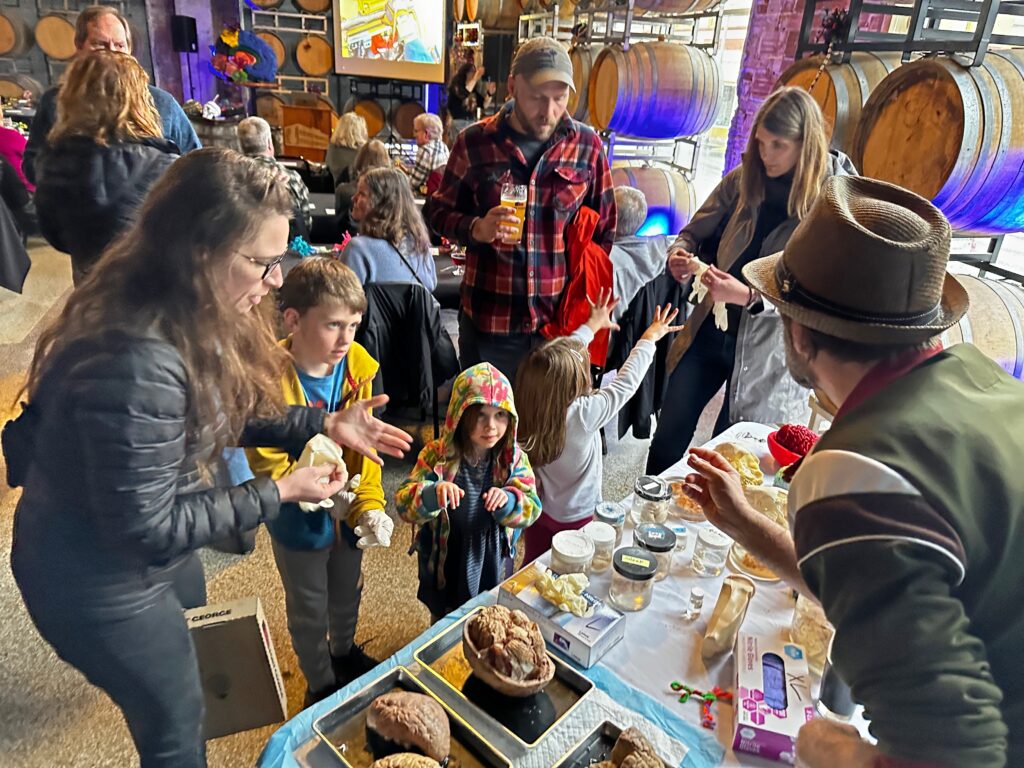
LEARN MORE: Signal from Noise on the Oregon Coast
Do the folds make me smart?
We spent the next two days making art, considering cool questions and sharing brains and stories with little ones at two area pre-K’s. Our vivid 3D printed noggins were very popular, as were our human and other animal skulls, which often provoked unbridled expressions of awe, wonder and joy.
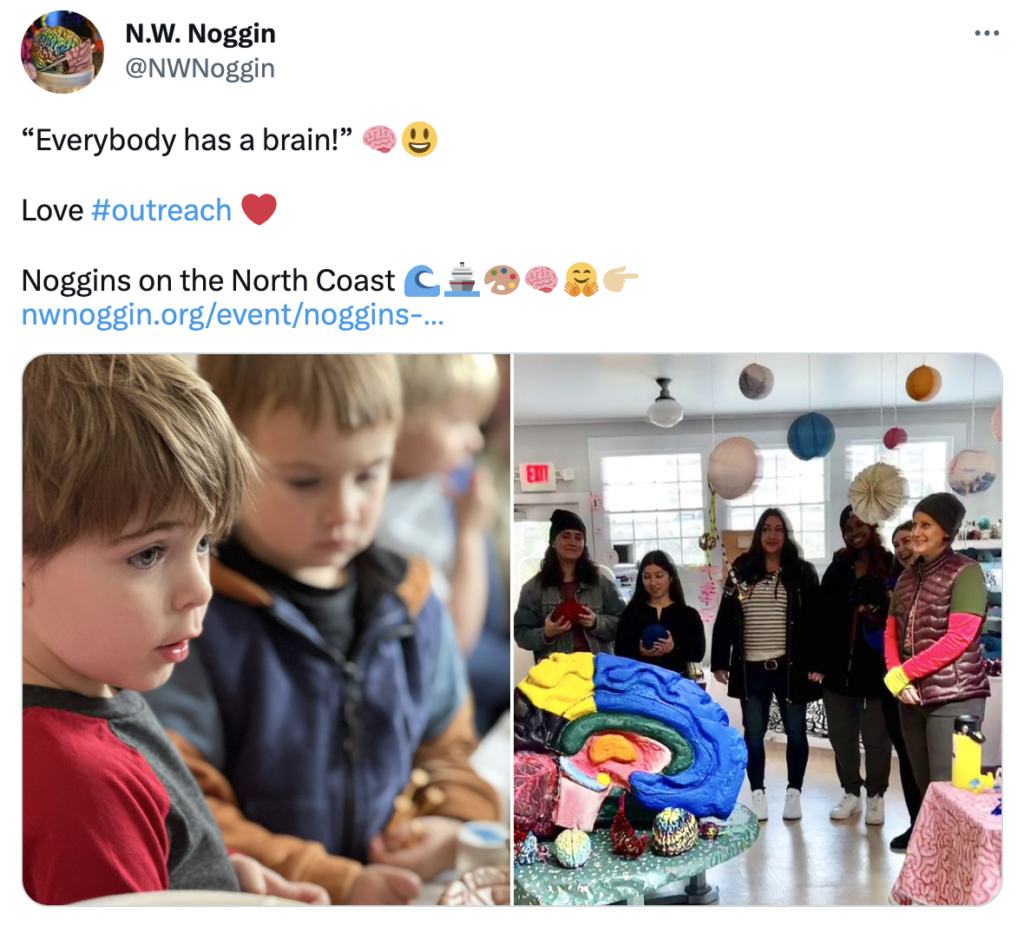
Thanks to all the kids, teachers and staff at Bumble Art Studio and West Exchange Pre-School! Both are warm educational spaces where we enjoyed crafting our own brain cell gel prints made from leaves, twigs, mosses and other natural materials that reminded us of neuron parts, including dendrites, soma and axons.

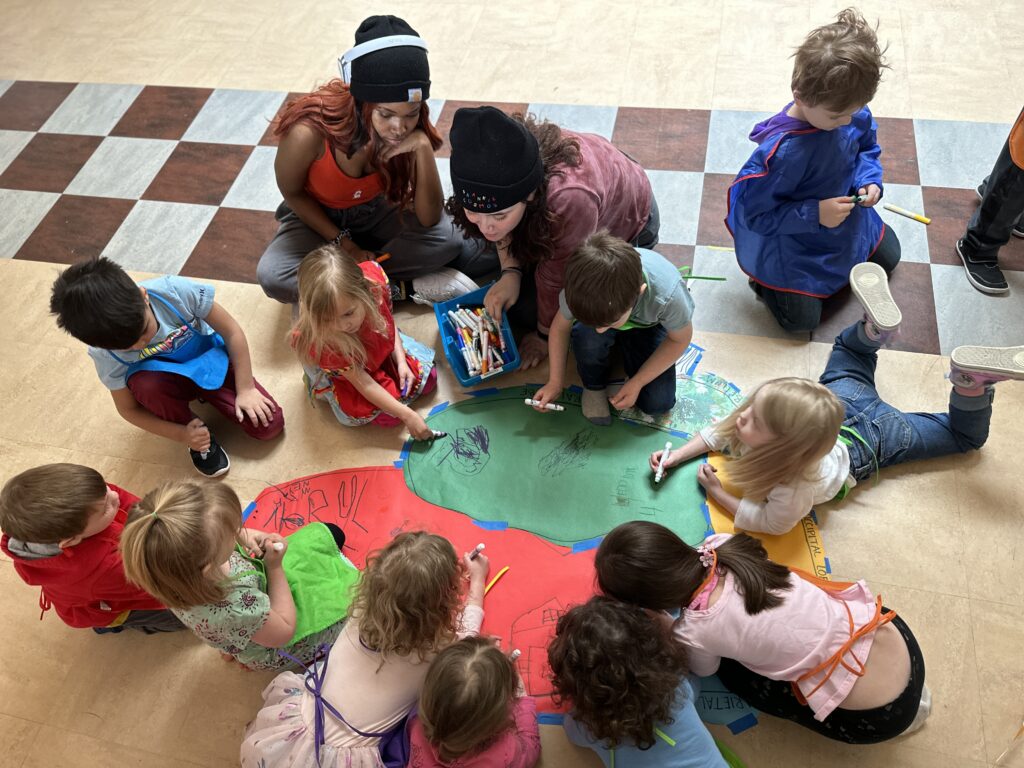
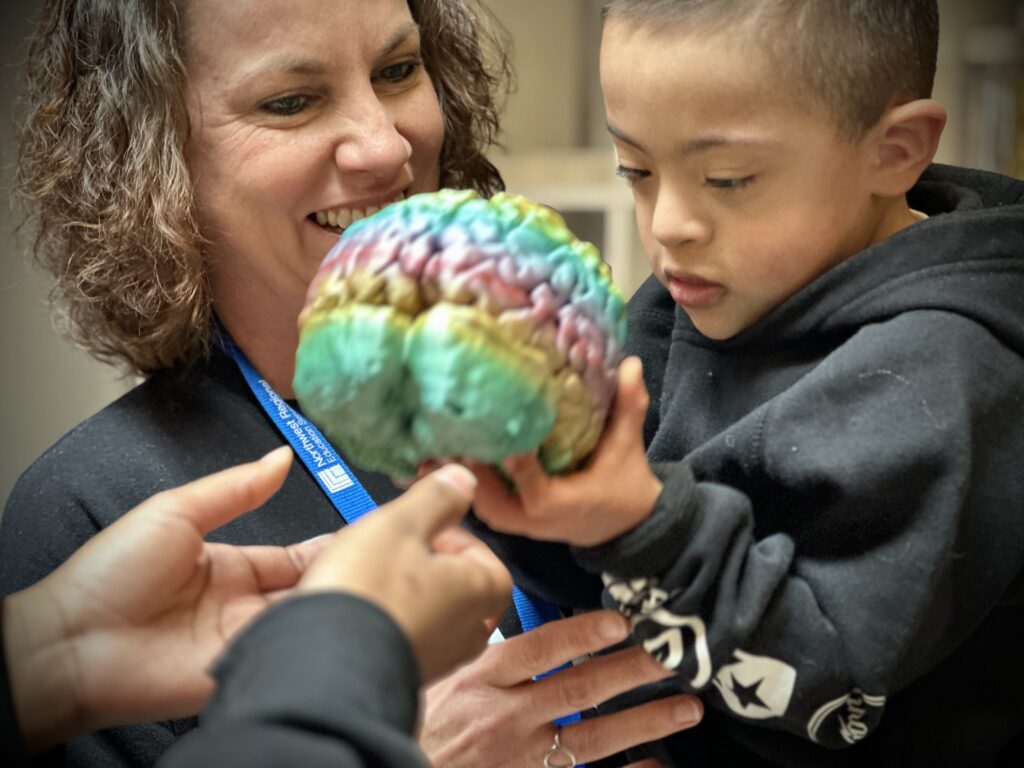
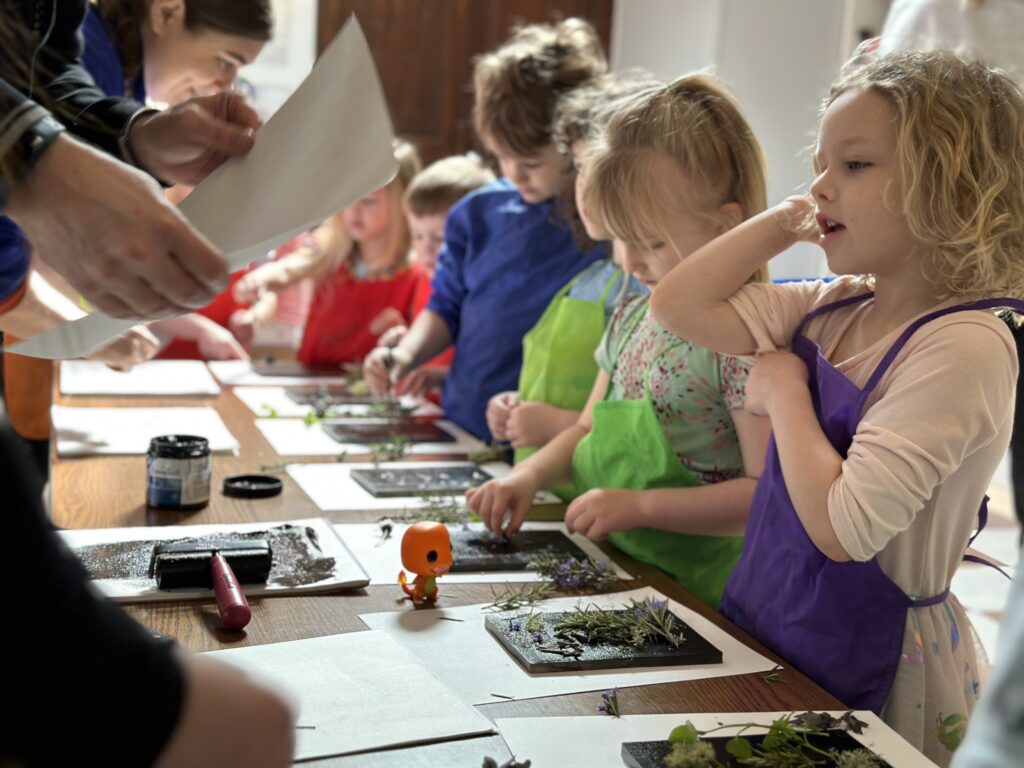
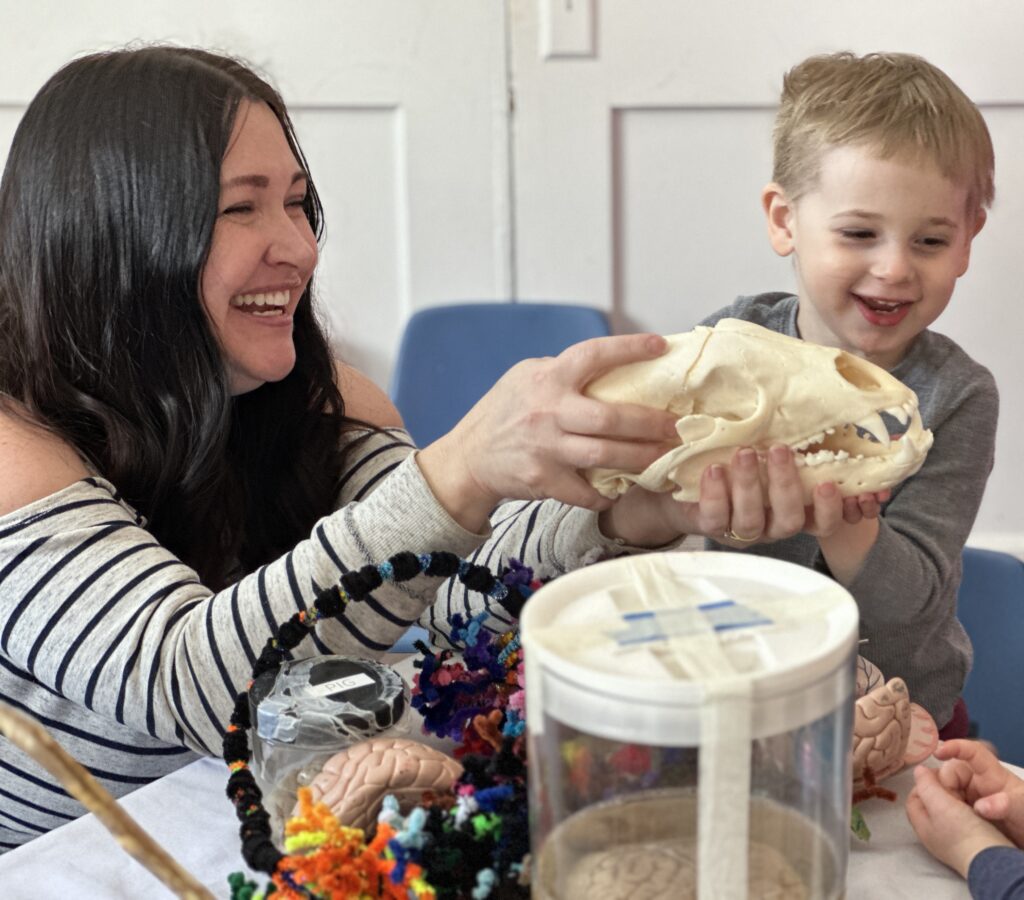
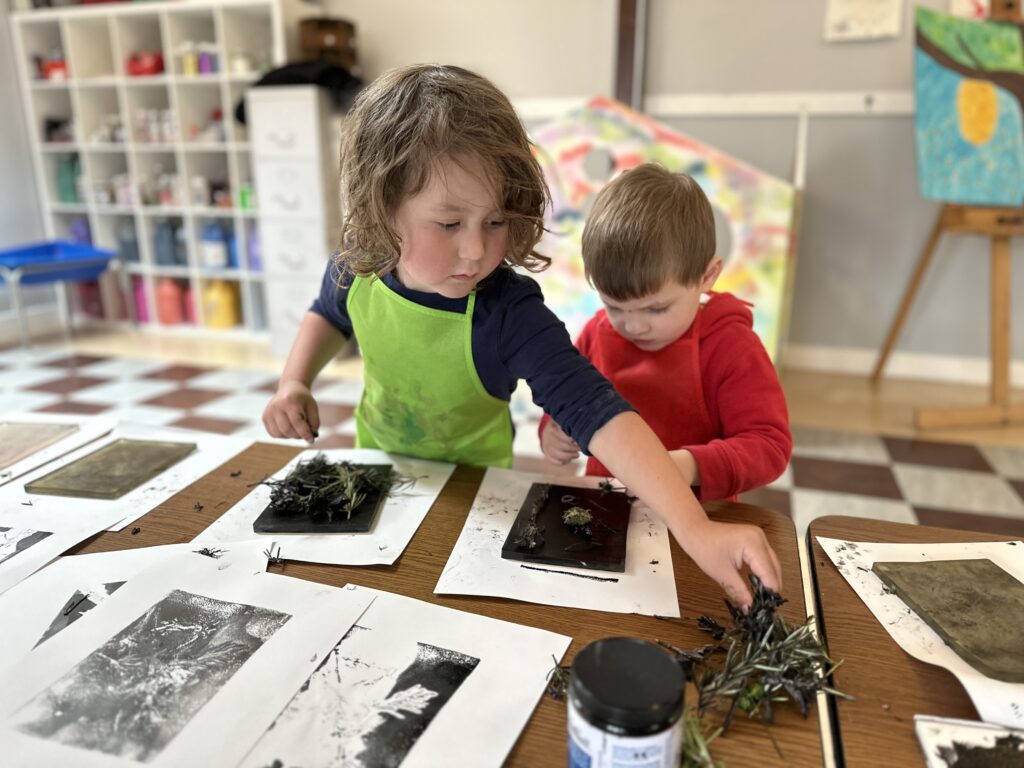
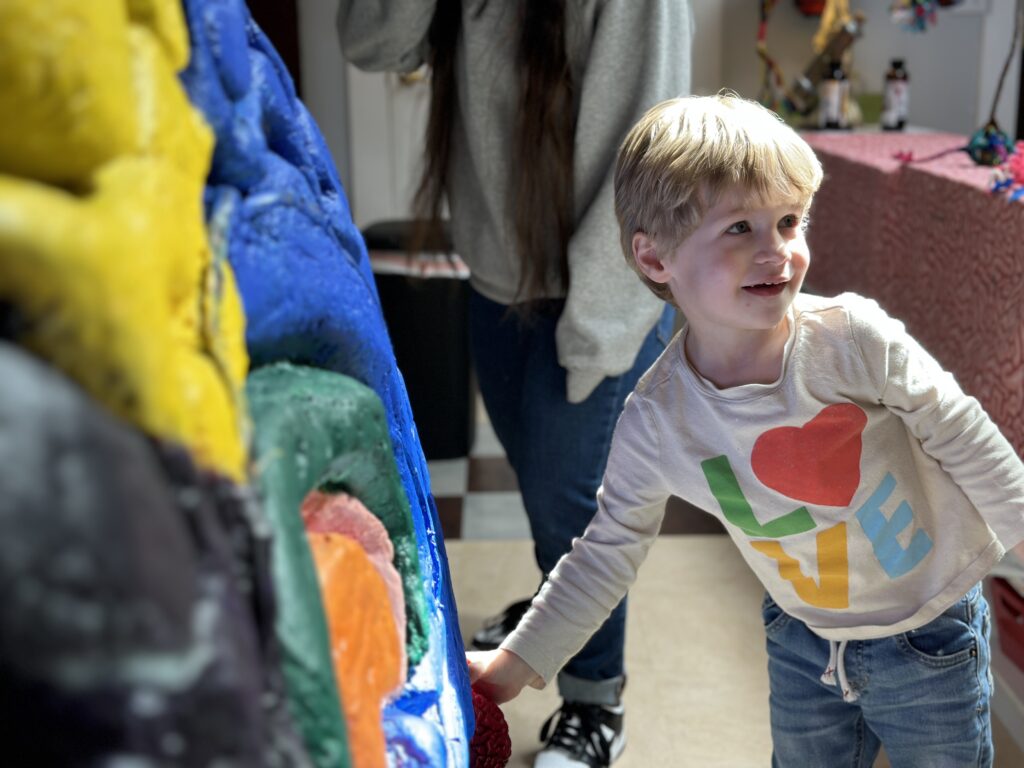
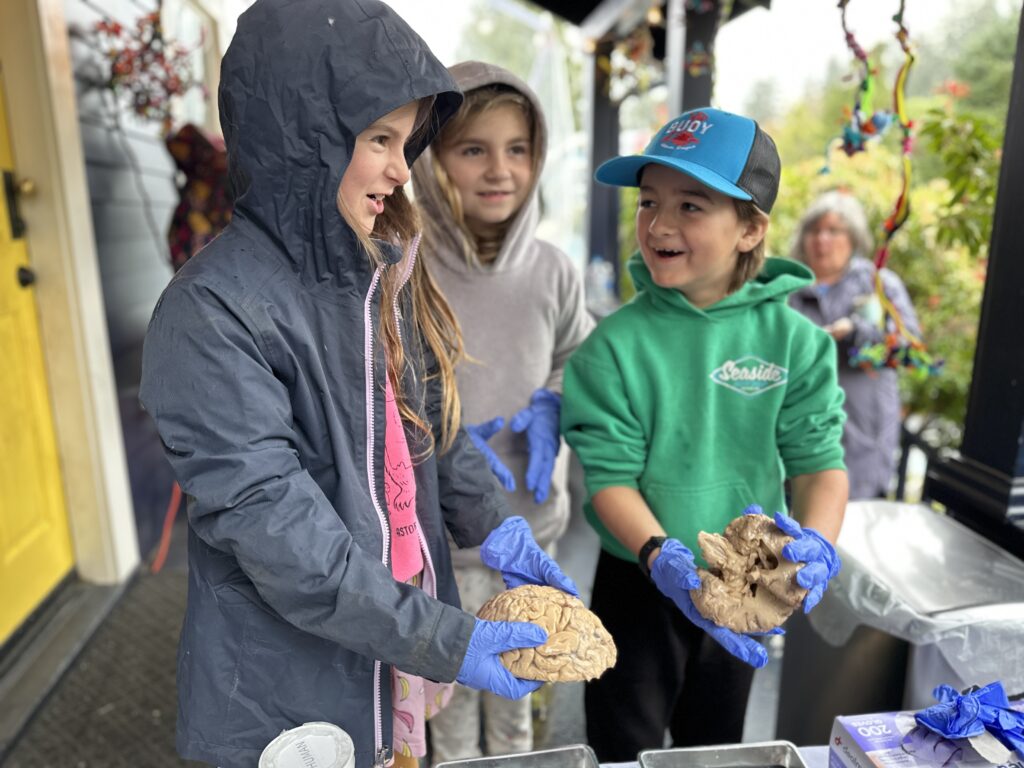
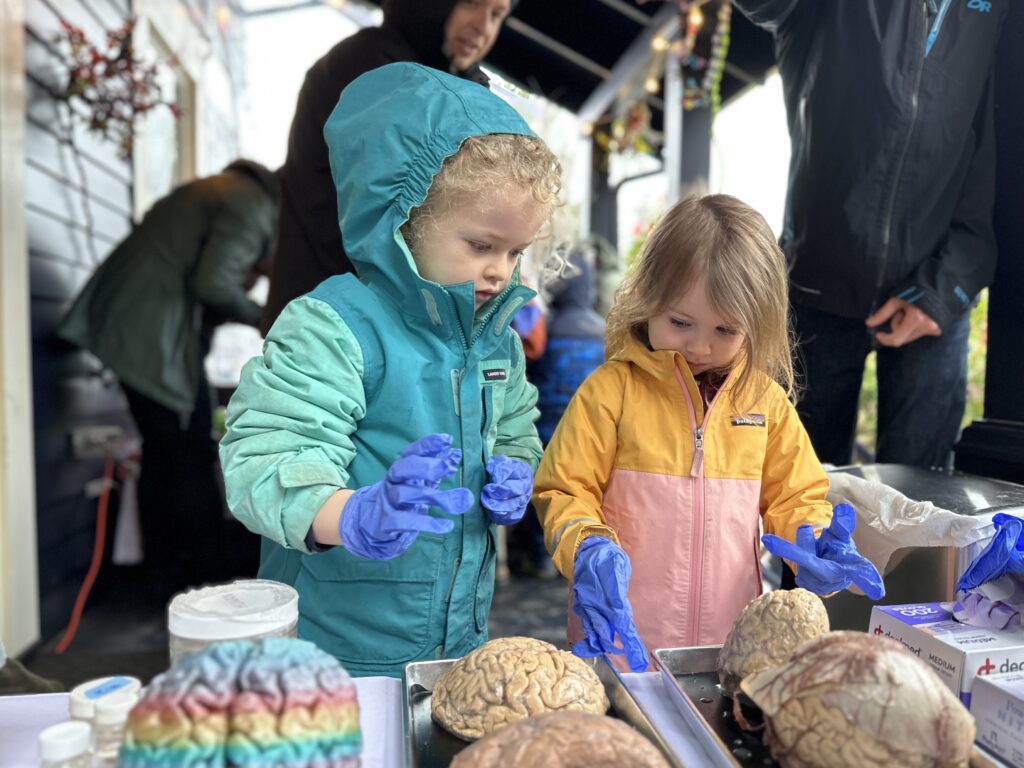
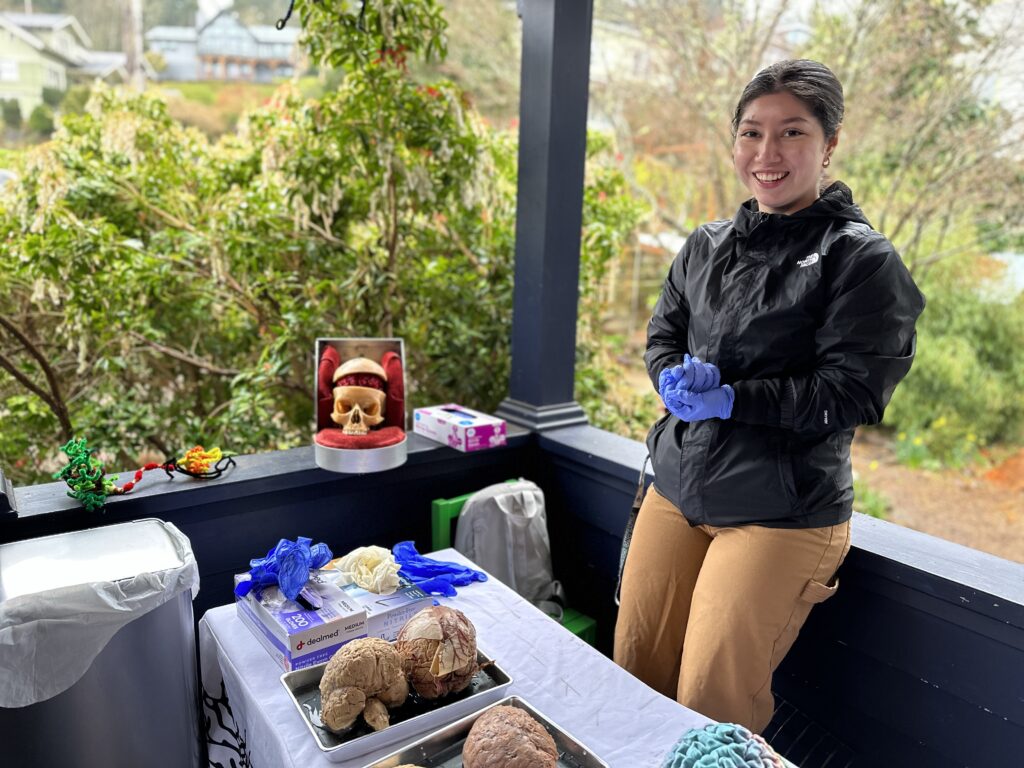
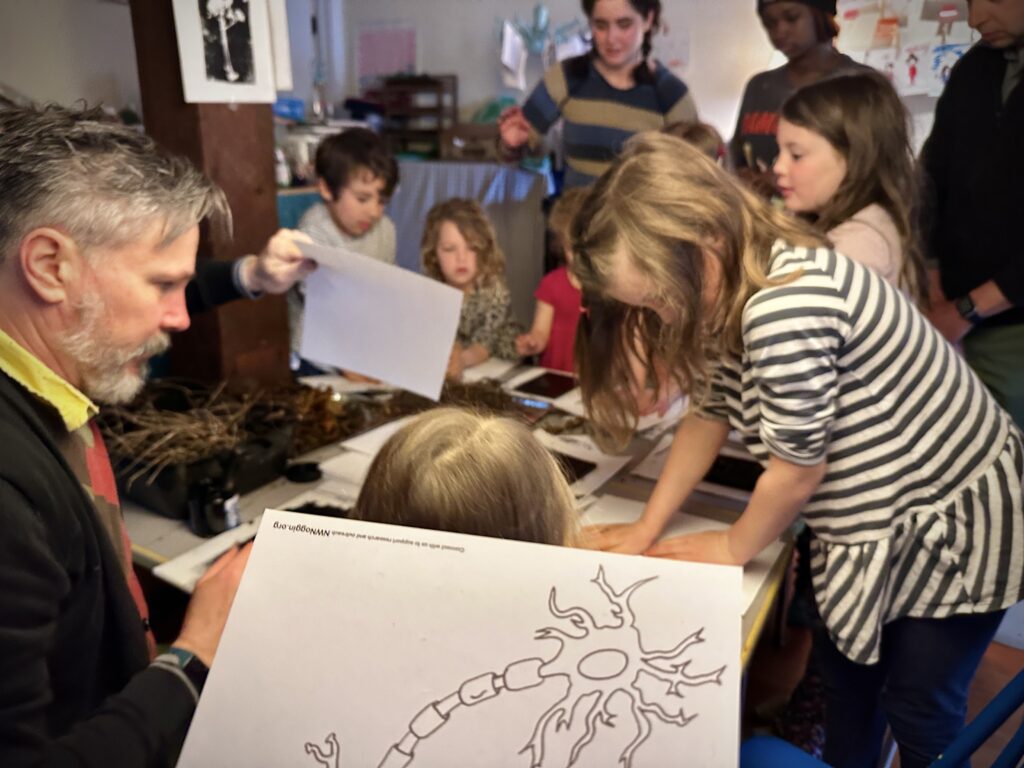
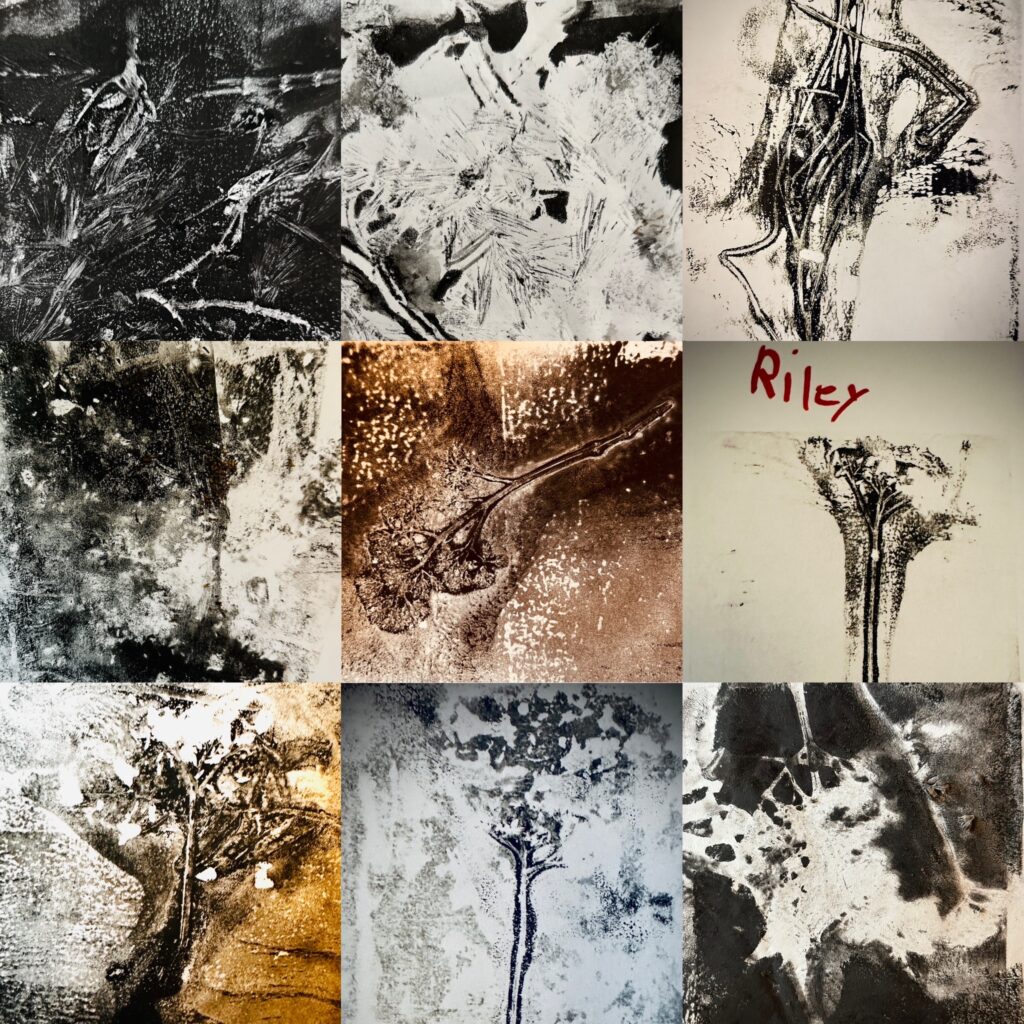
CLICK HERE: MAKE YOUR OWN BRAIN CELL GEL PRINTS!
Learning from Loggers!
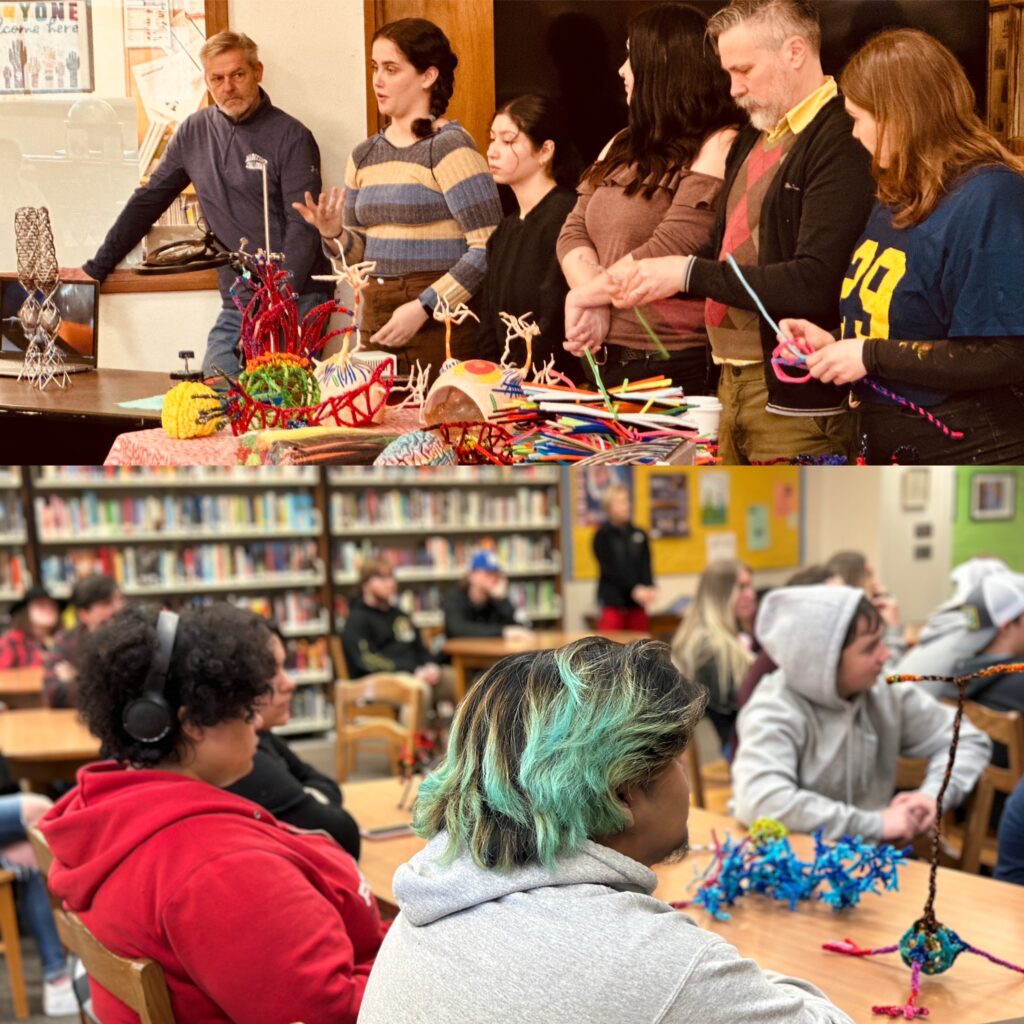
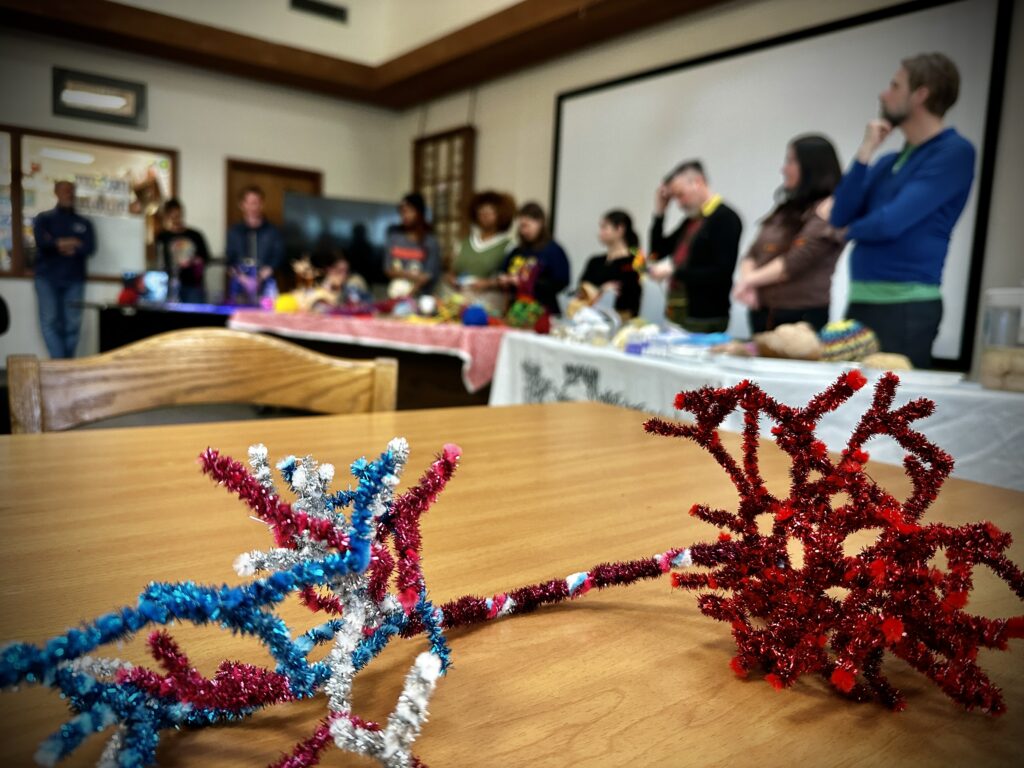
Next we drove east into hilly, forested Clatsop County.
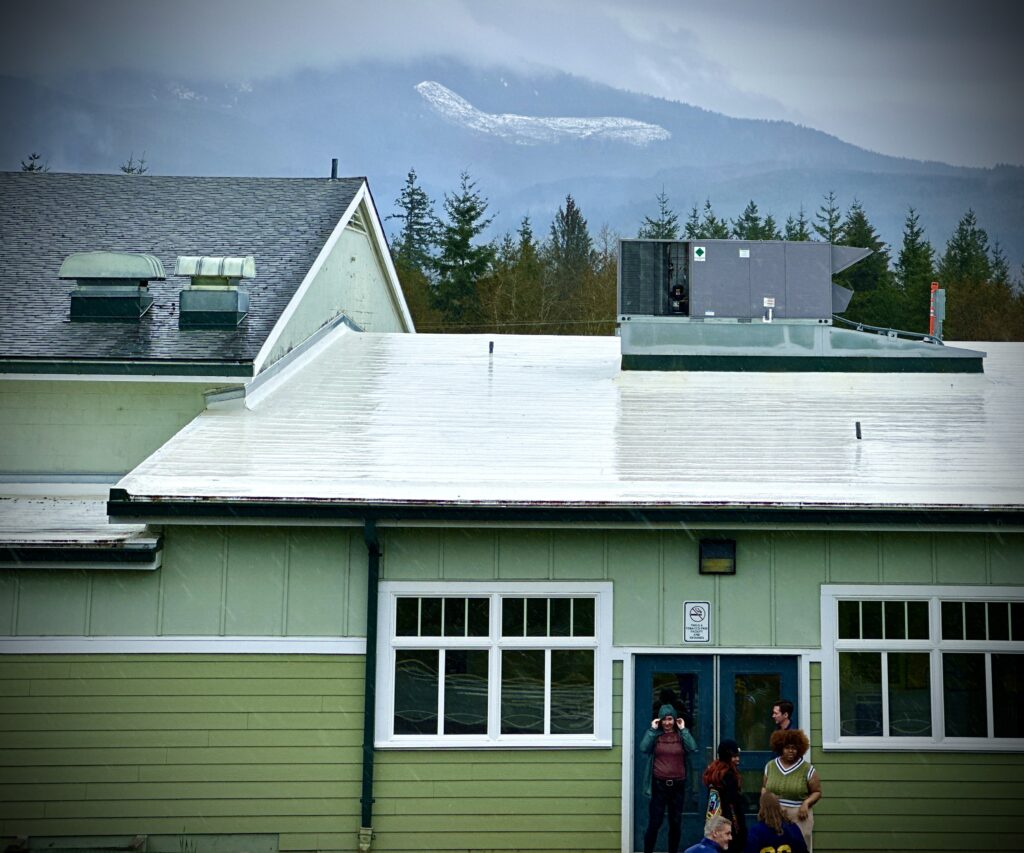
We were honored to welcome back Captain Mark Hails, who had presented on wave energy in the Columbia River, for our afternoon visit to Knappa High School! Mark brought along some bar pilot videos and had animated conversations with students curious about his career.
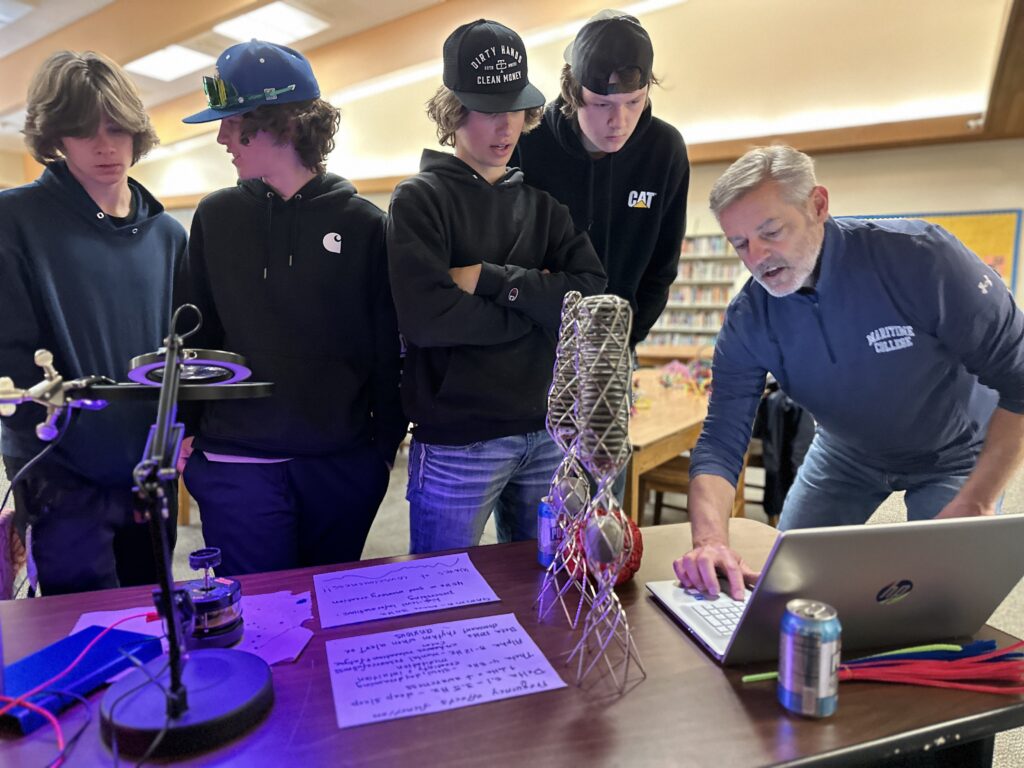
LEARN MORE: Columbia River Bar Pilots
LEARN MORE: Become a Maritime Pilot
LEARN MORE: Pilot Training
We also delved deep into excellent and sometimes challenging questions about mental health, teenage brain development, the importance of sleep and the actions of effects of various drugs. Some students described the less than ideal guidance they’d received from from a counselor with questionable behavior and training, and how much they appreciated an evidence-based discussion.
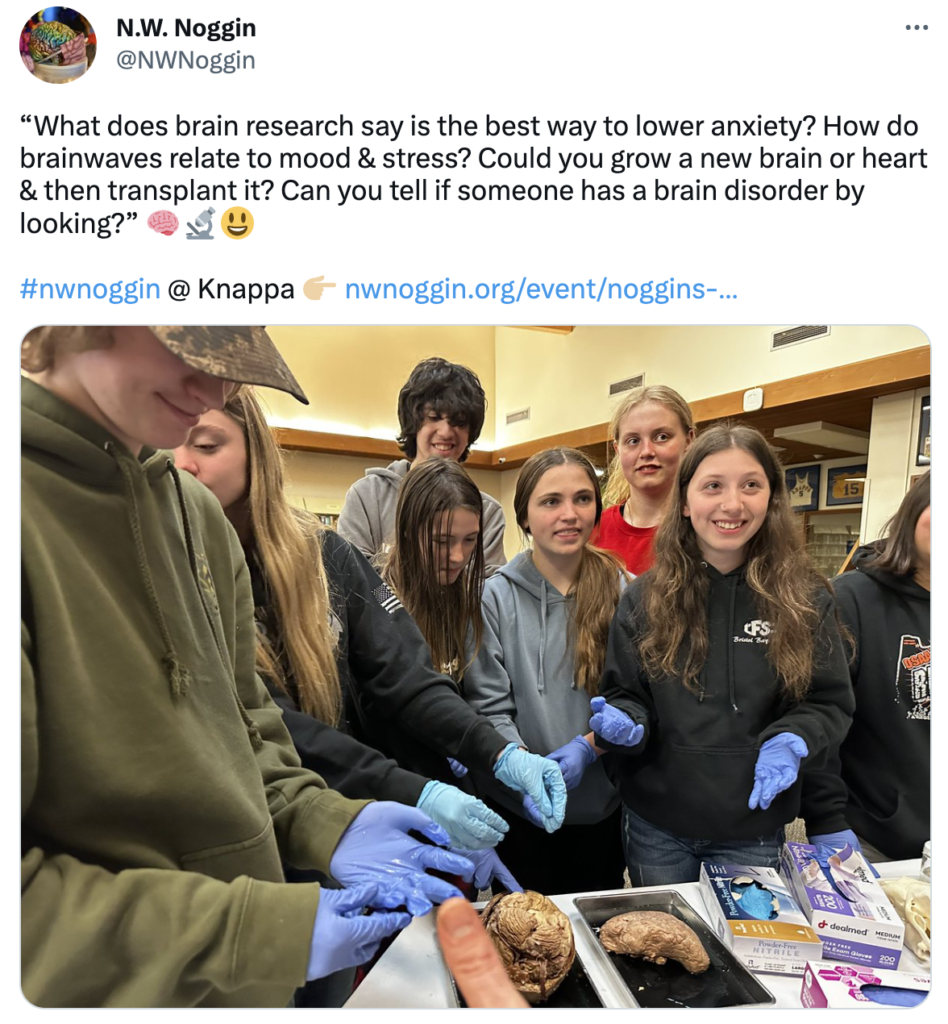
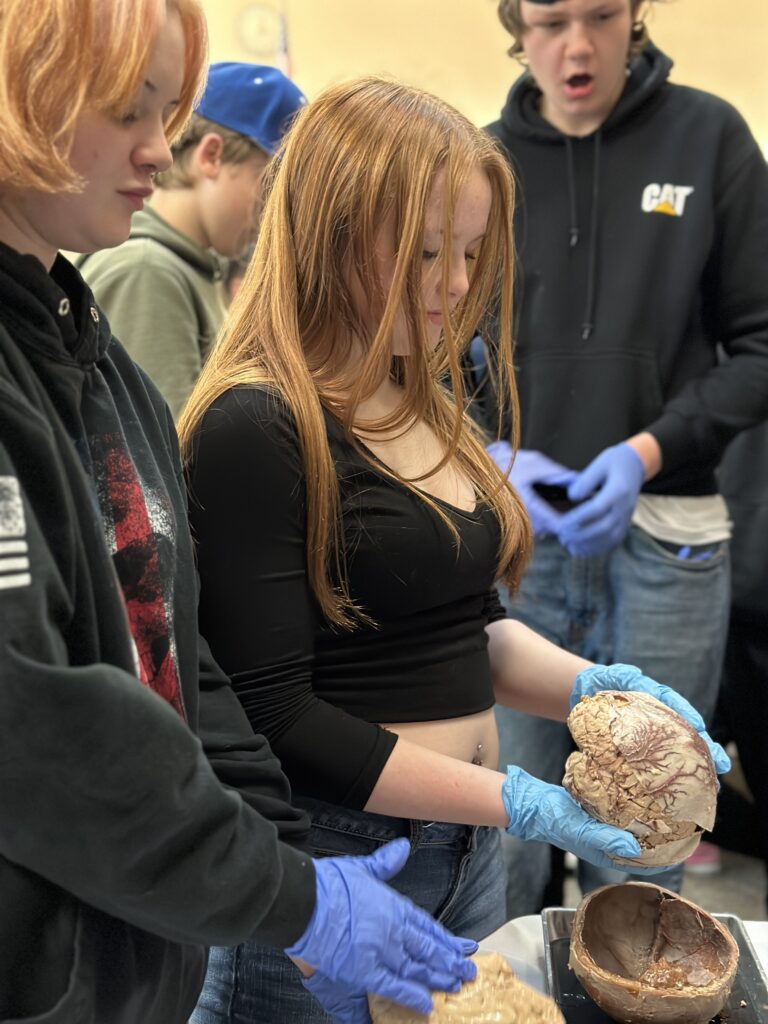
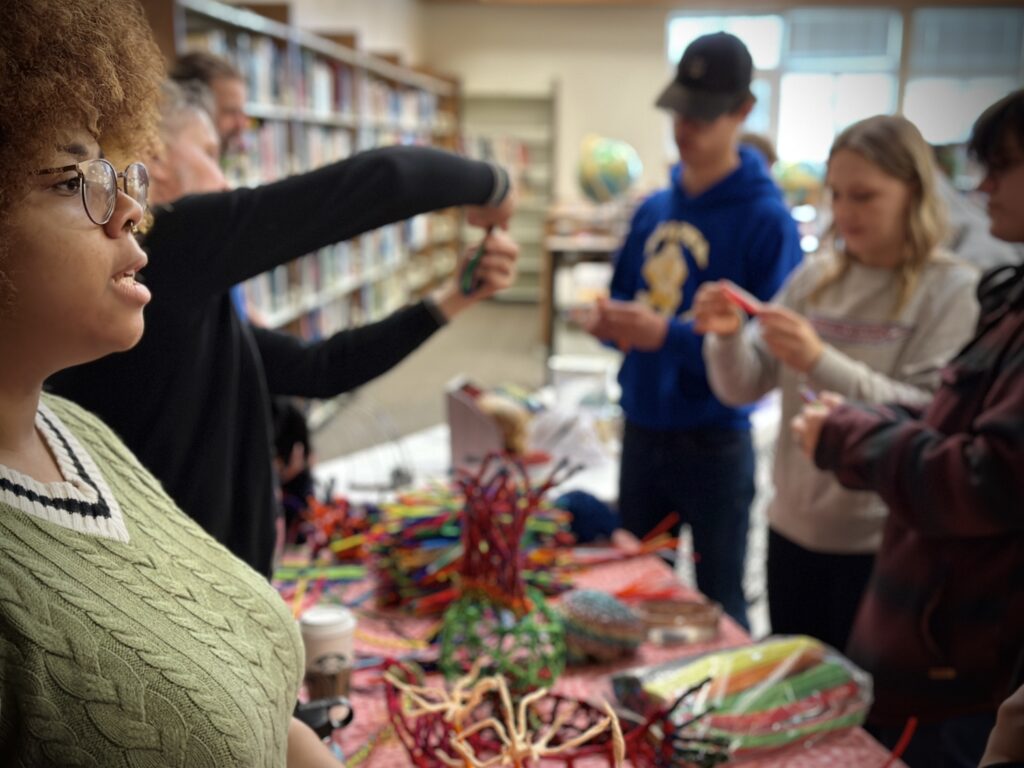
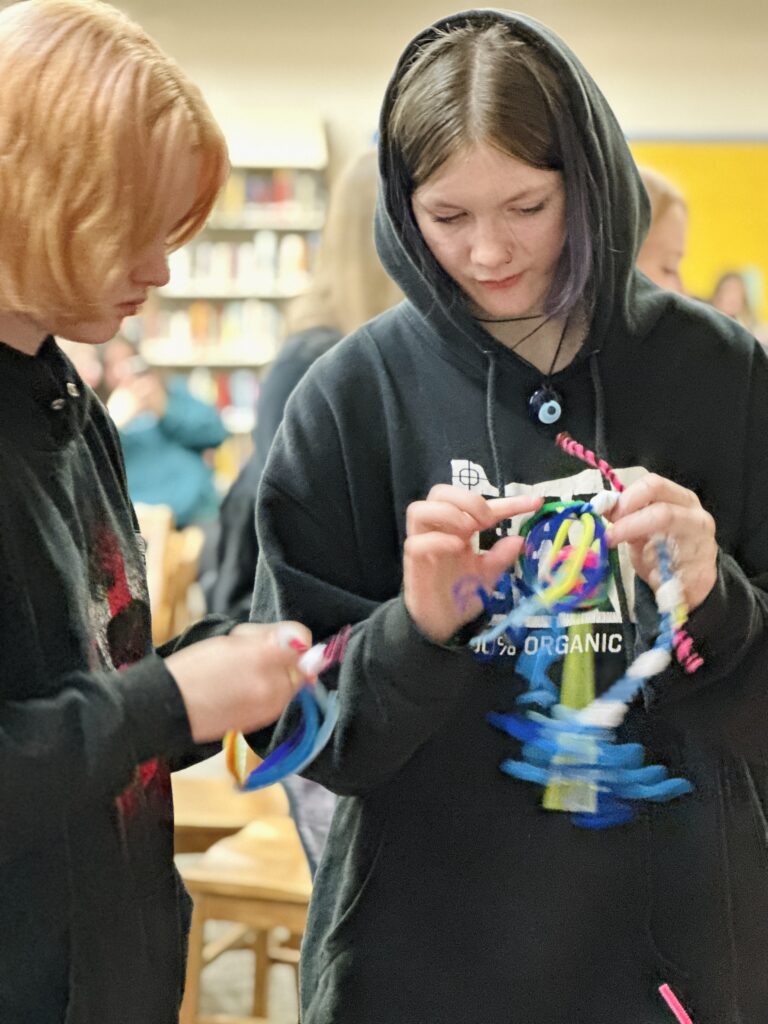
We also learned a lot about the behavior of elk from some skilled student hunters. Roosevelt elk, which roam freely through this region, are extremely clever and adaptable, and quickly learn to avoid people based on how they hunt!
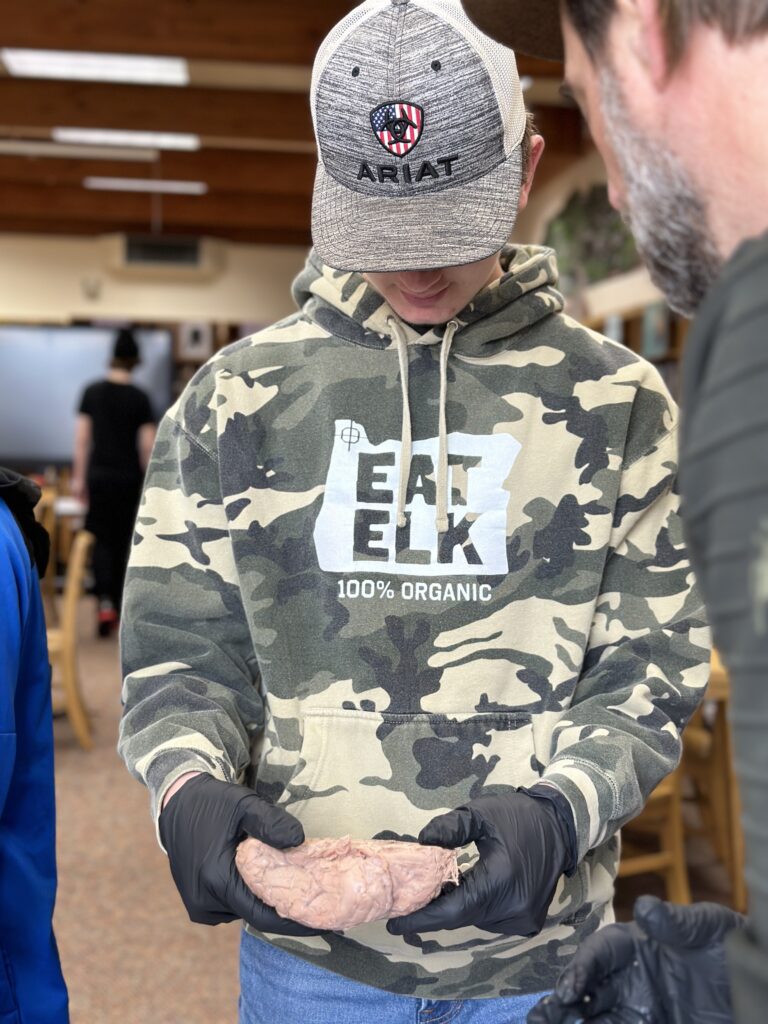
“We also found that elk adjusted behaviours depending on the type of threat (bow and arrow vs. rifle hunters). This fine-tuning by elk to avoid hunters, rather than just becoming more cautious during the hunting season, highlights the behavioural plasticity of this species.”
— Henrik Thurfjell et al
LEARN MORE: Human selection of elk behavioural traits in a landscape of fear
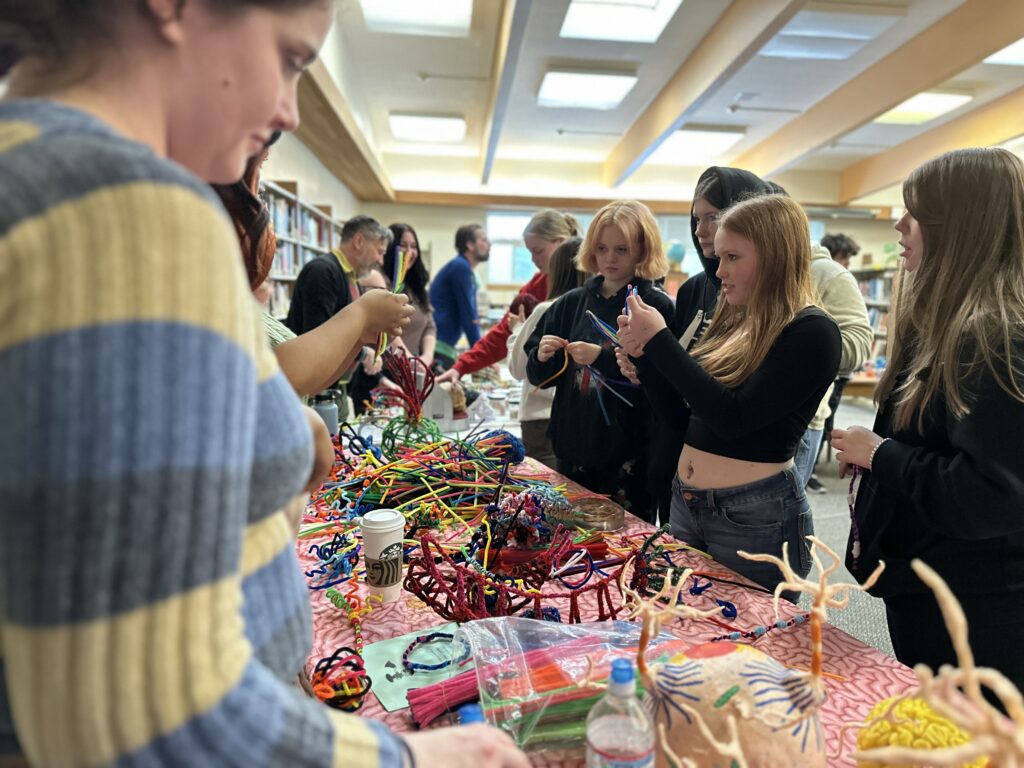
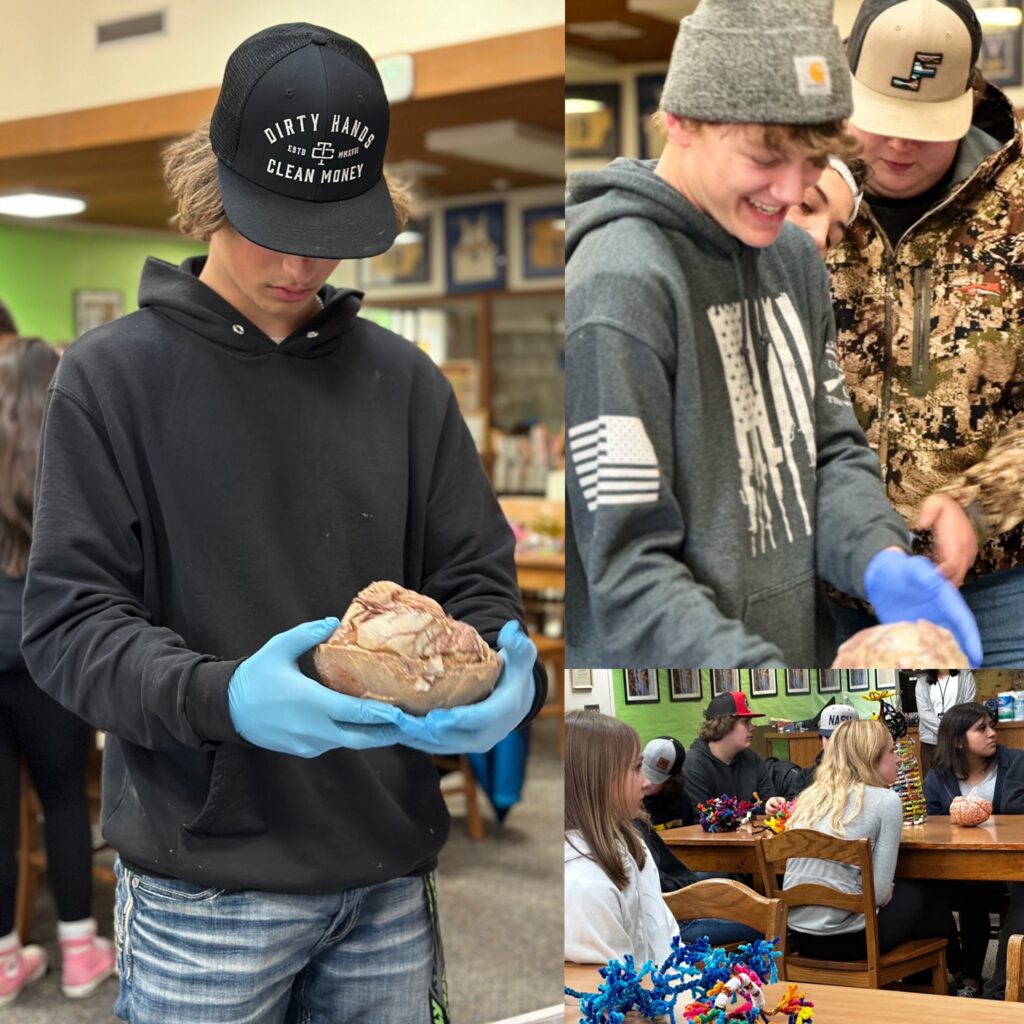
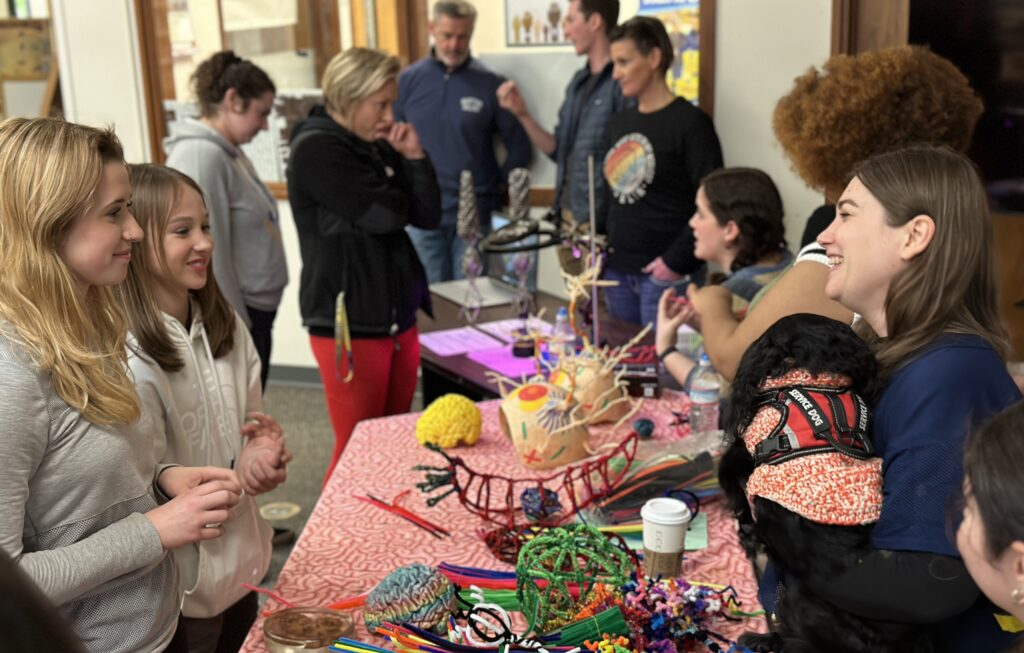
We asked students what else we should know about their school, and were thrilled to have the opportunity to tour the impressive wood shop and welding facilities!

Huge thanks to everyone at Knappa! And, just saying, it would be very cool to examine an elk brain, and/or skull 🙂
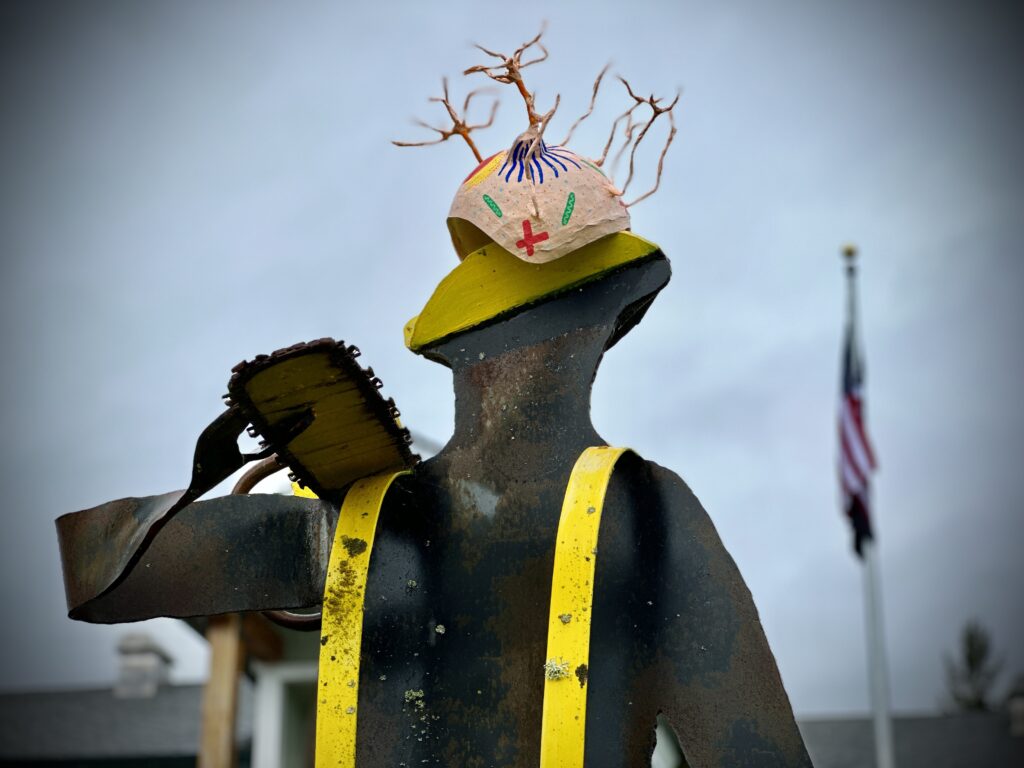
Just Us Fish
For our last day on the North Coast we joined the early morning crush of students arriving at Astoria High School, rolling our noggins and art cart into their spacious library.
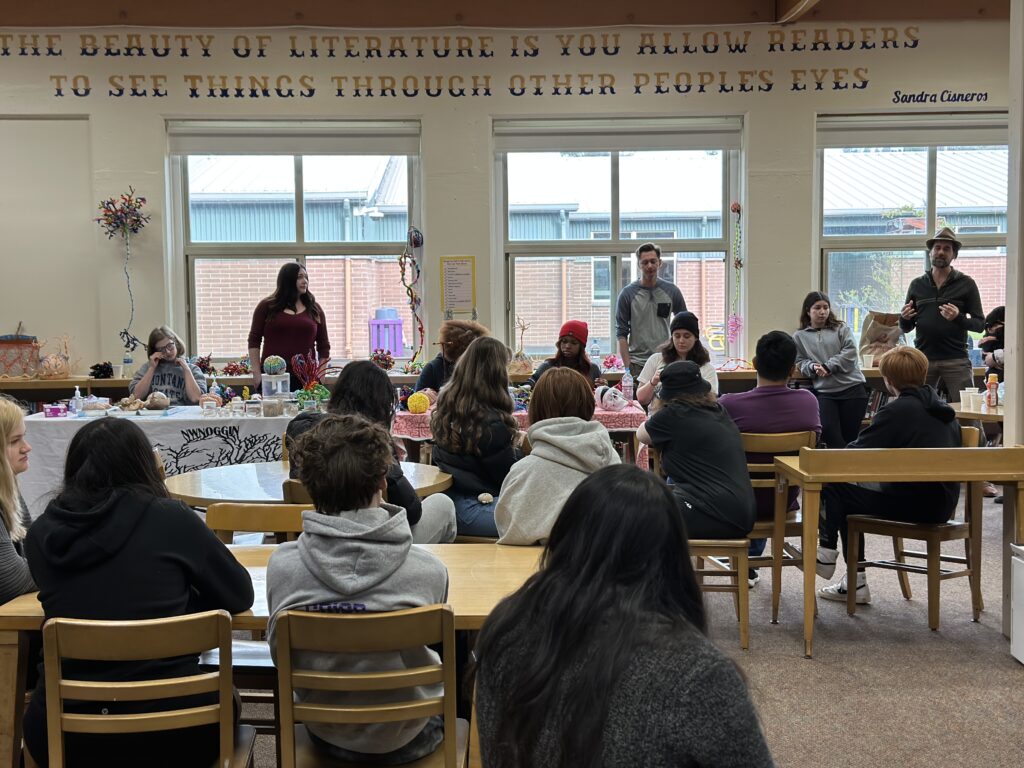
We loved the Sandra Cisneros quote!
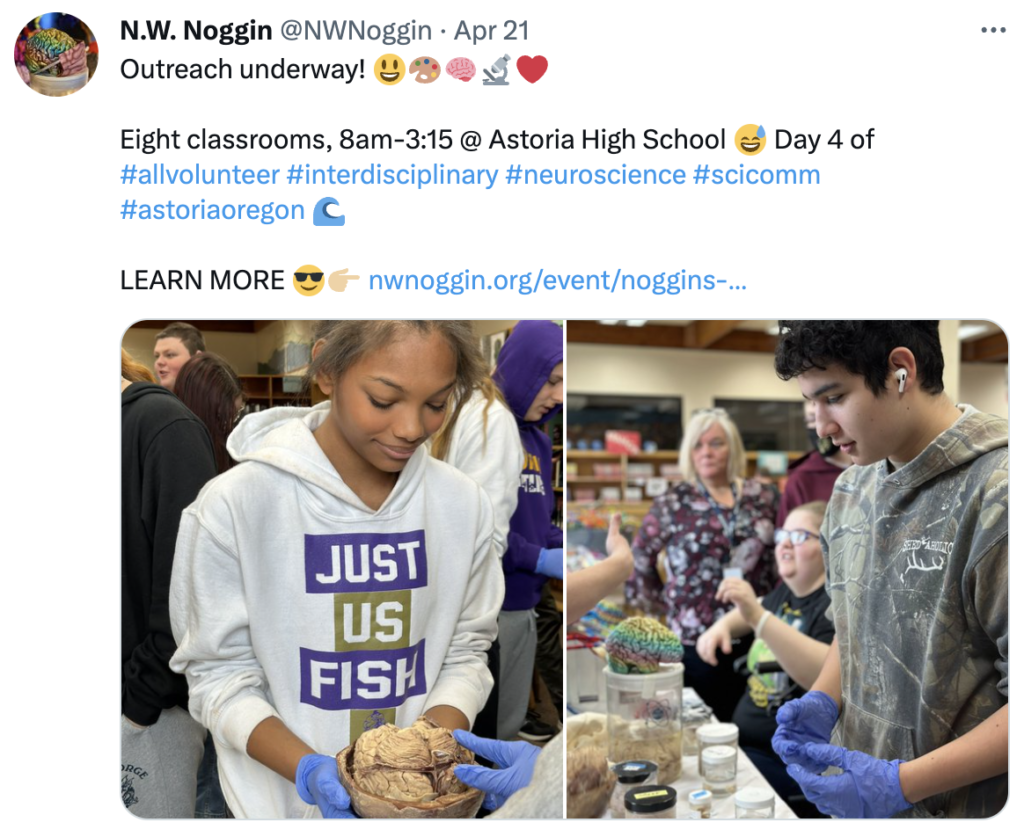
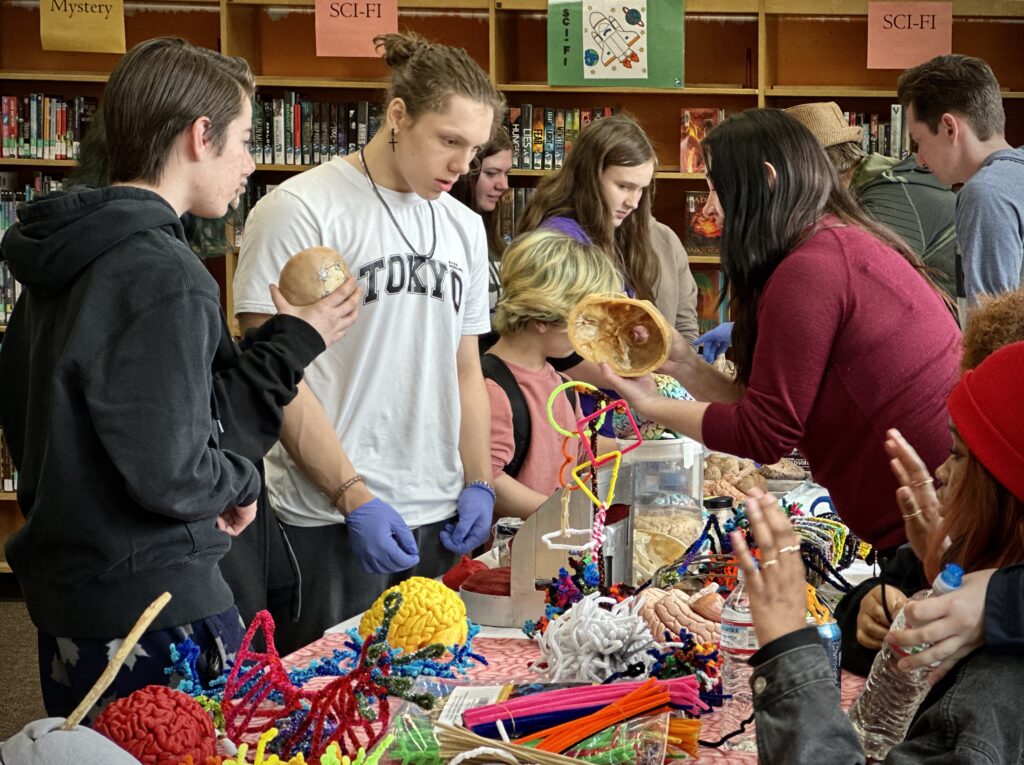
“Why did you choose to learn about the brain? How do genetics influence your risk of developing ADHD? Why are concussions bad for your brain? If you could study another body part, what would you choose? What is one assumption that people make about brains that is wrong? What type of exercise is best for the brain? How does the brain let you know that you’re tired? When you feel completely spent is your brain still keeping a little energy in reserve? Why is it so important to exercise your brain?”
— Students at Astoria High School
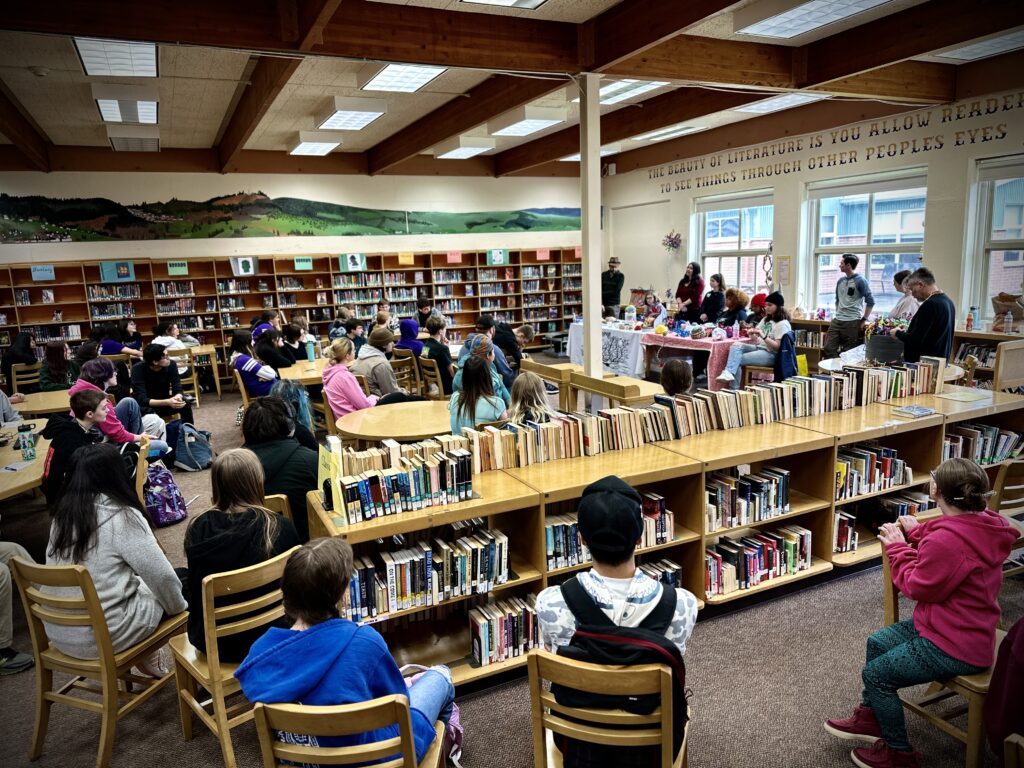
In response to questions from hundreds of Astoria students throughout the day – questions about sleep, genetics, ADHD, anxiety, depression and other compelling topics – we explored some research-based ways to have a healthy brain.
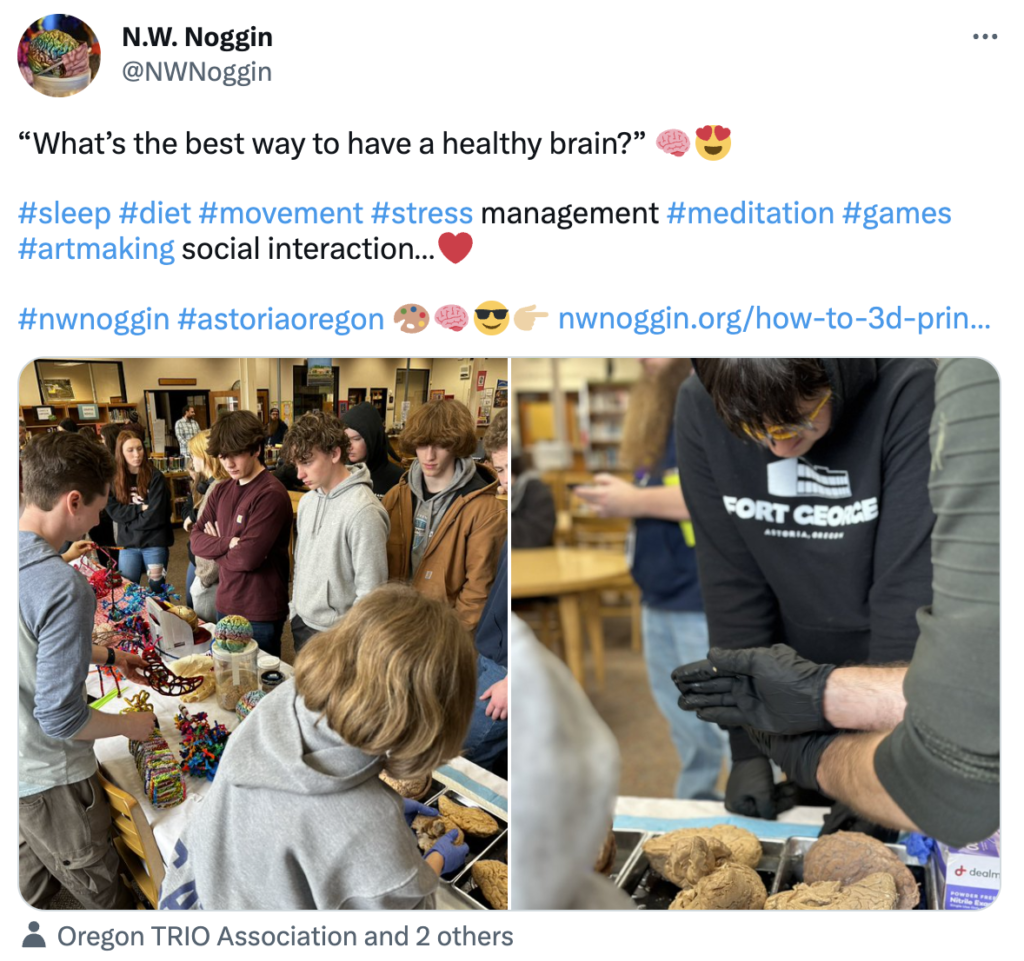
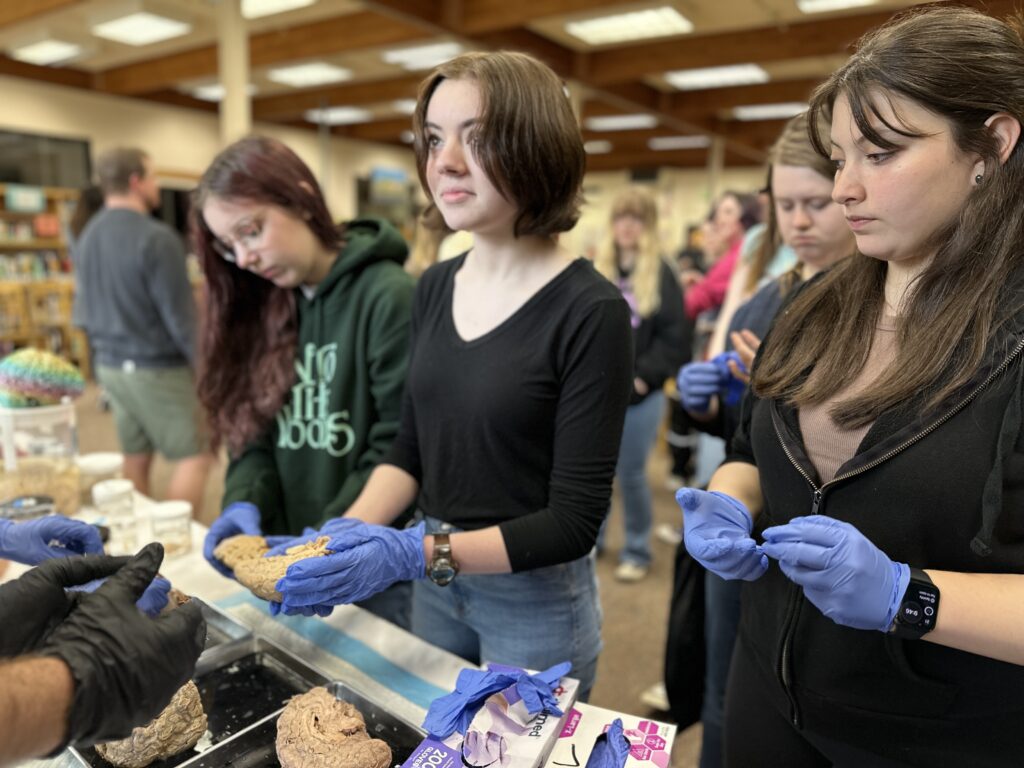
Good sleep is critical, of course, something we’ve explored many times before!
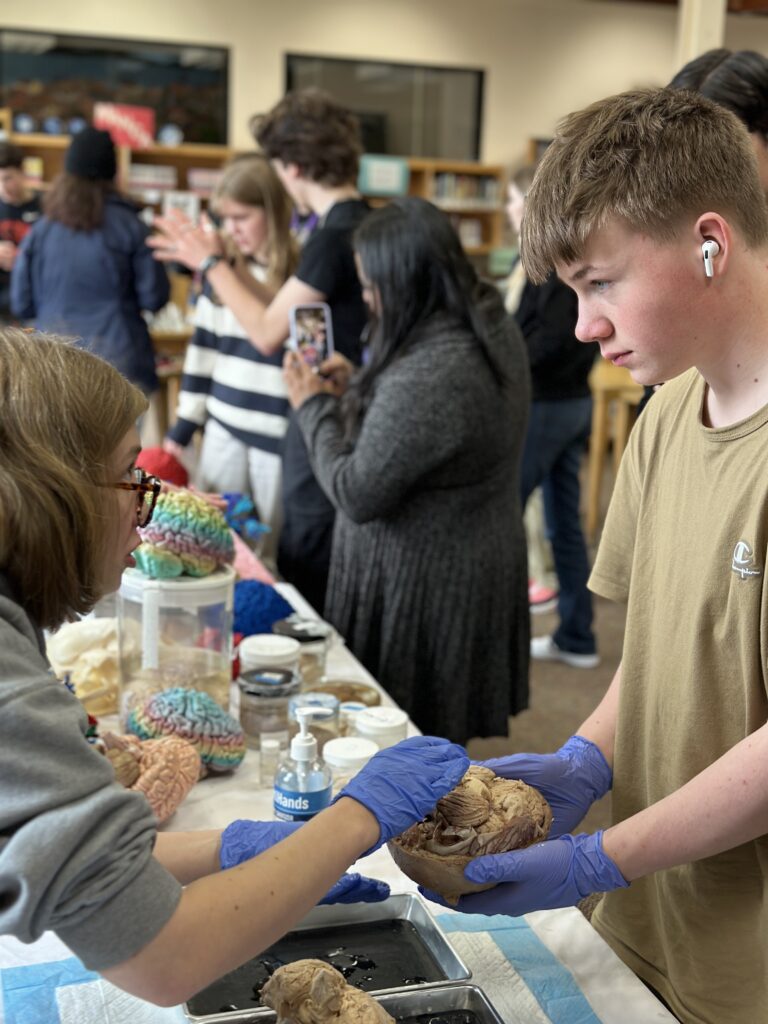
LEARN MORE: Let Kids Sleep!
What about pets? One of our Noggin volunteers, Kadi Rae, brought her adorable service dog into all the schools we visited, and Roadie clearly had a positive impact on students. Though largely blind and deaf, Roadie is trained to respond to rising cortisol levels, a sign of increasing stress and potential seizures.
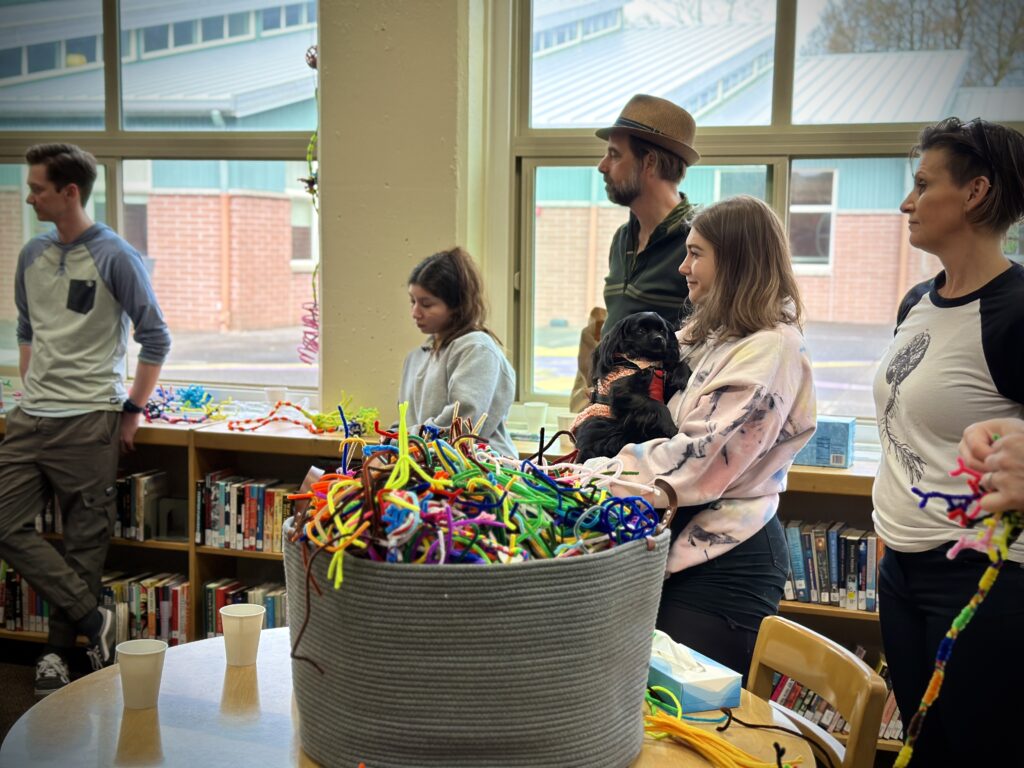
While we talked with students, Roadie would sometimes beeline towards a particular kid (or a Noggin volunteer), and they were often delighted, with several reporting that they felt better and less stressed after holding the dog.
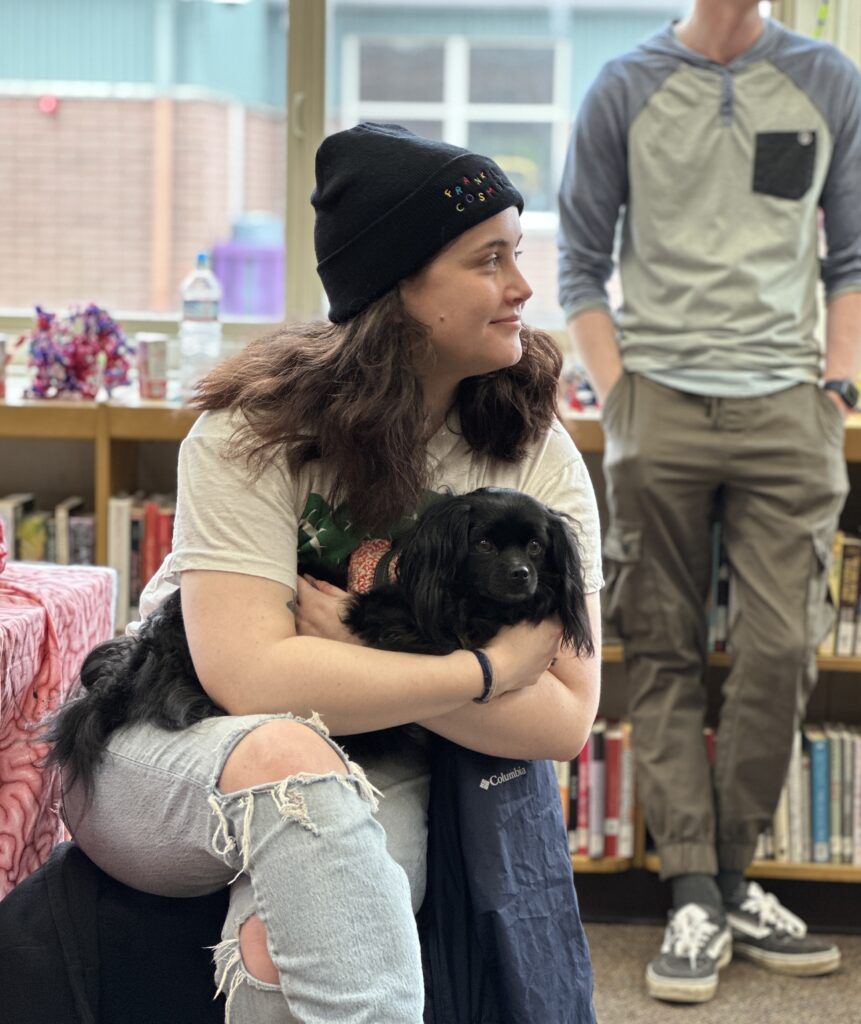
Both students and teachers in Astoria enthusiastically agreed that a trained therapy dog would be a welcome addition to the classroom!
LEARN MORE: Technical and clinical aspects of cortisol as a biochemical marker of chronic stress
LEARN MORE: Dog alerting and/or responding to epileptic seizures
LEARN MORE: Dogs can discriminate between human baseline and psychological stress condition odours
LEARN MORE: Therapy Dog Welfare Revisited: A Review of the Literature
LEARN MORE: Therapy Dogs in Educational Settings: Guidelines and Recommendations for Implementation
Other suggestions for both attaining and maintaining brain health, supported by neuroscience research, included meditation, movement, stretching and exercise, a healthy diet, playing social games (including video games),…
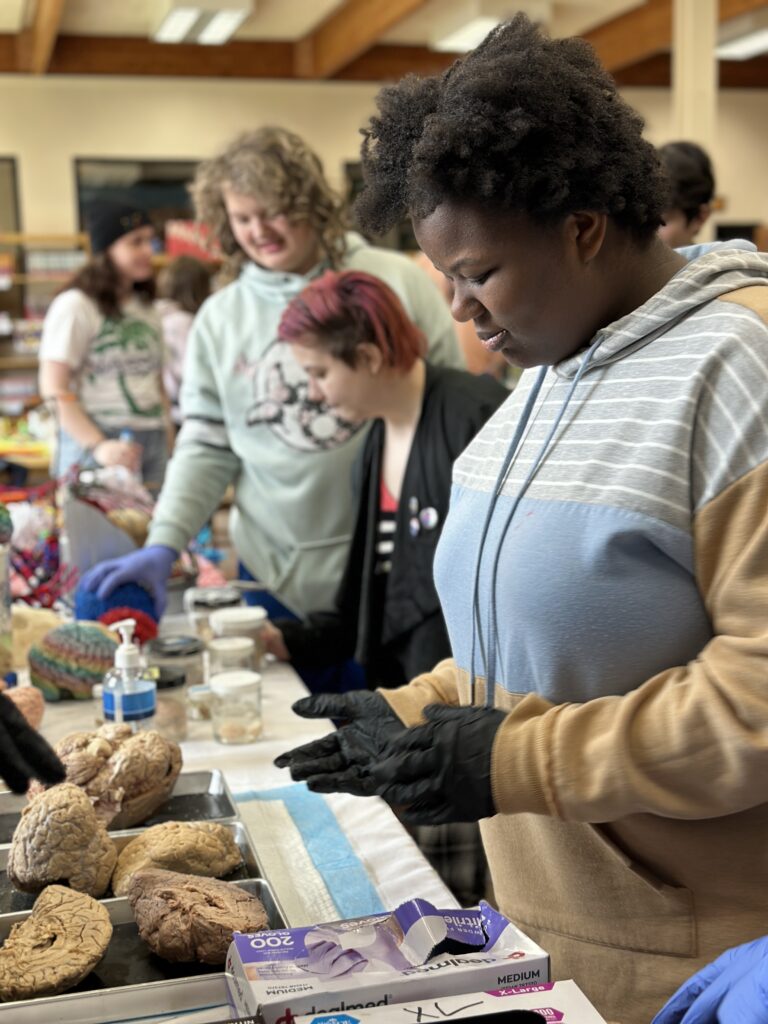
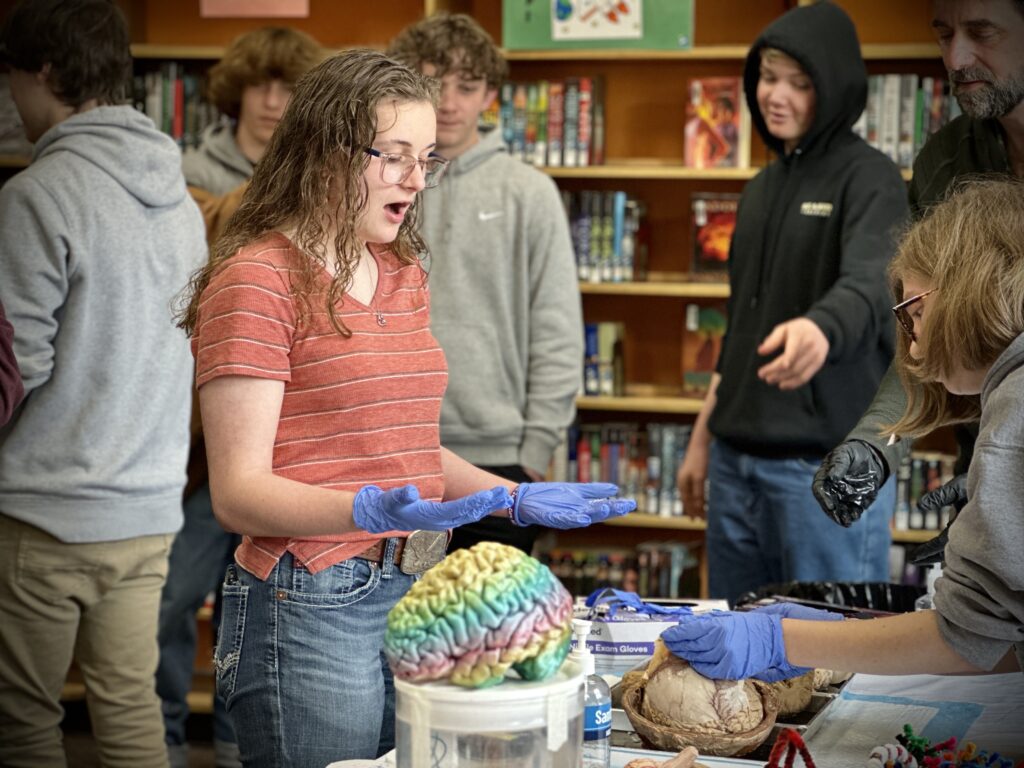
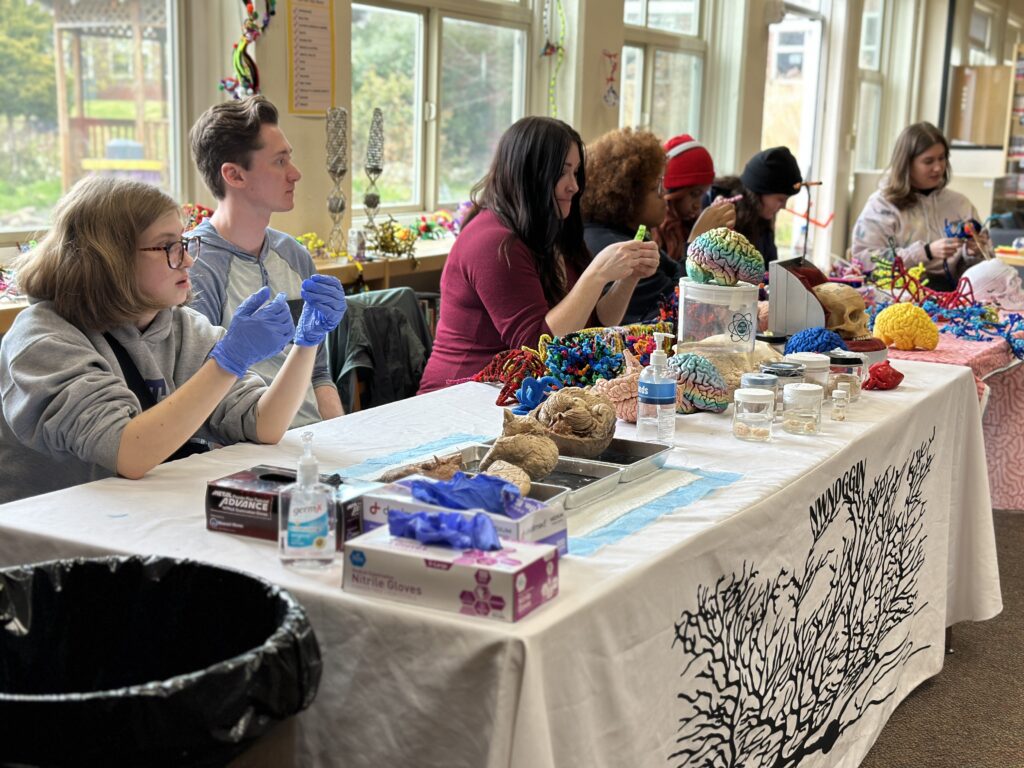
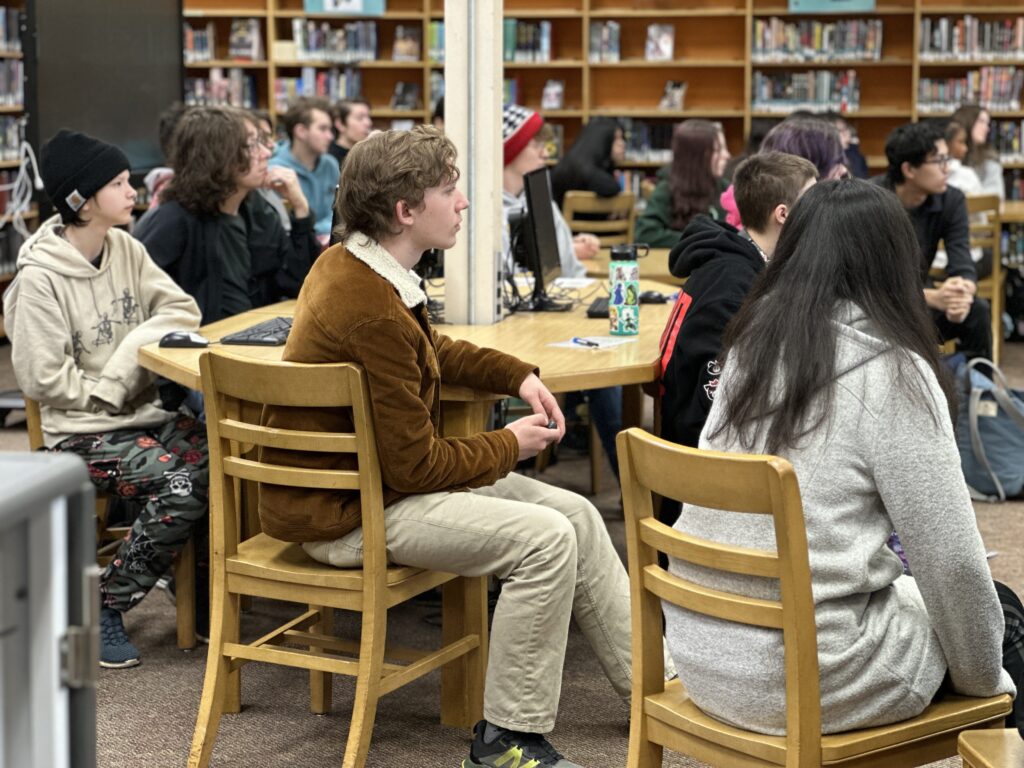
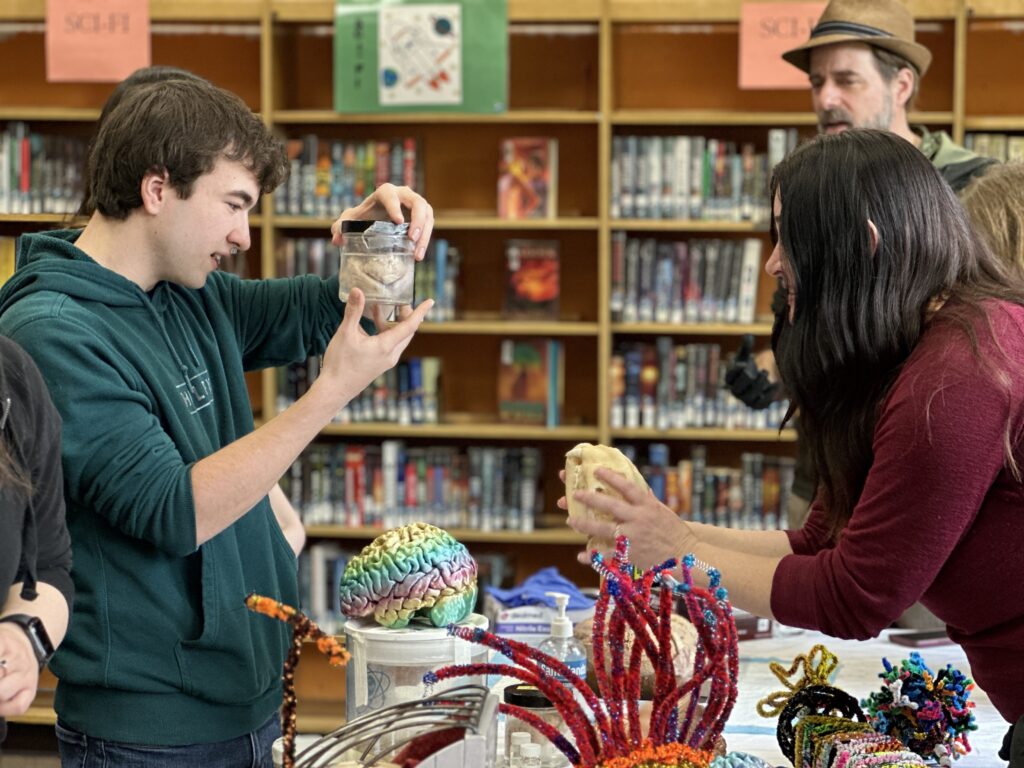
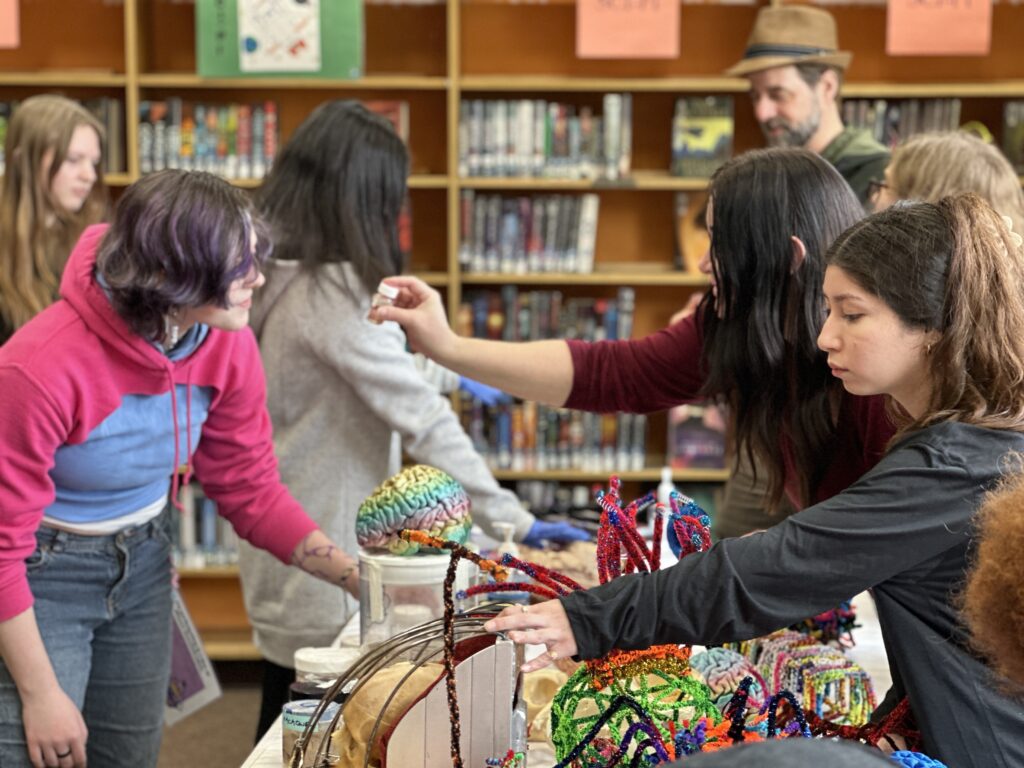
LEARN MORE: Meditation and Mindfulness: What You Need To Know
LEARN MORE: Effective Stress Management through Meditation
LEARN MORE: Mind and Body Approaches for Stress and Anxiety: What the Science Says
LEARN MORE: The benefits of meditation and mindfulness practices during times of crisis such as COVID-19
LEARN MORE: Regular exercise is associated with emotional resilience to acute stress in healthy adults
LEARN MORE: Regular Physical Activity, Short-Term Exercise, Mental Health, and Well-Being Among University Students
LEARN MORE: Stress management intervention to enhance adolescent resilience
LEARN MORE: Your Inner Worm Bin (NW Noggin)
LEARN MORE: Eat to Beat Stress
LEARN MORE: Video gaming may be associated with better cognitive performance in children
LEARN MORE: Video games don’t cause violence
AND MAKING ART!
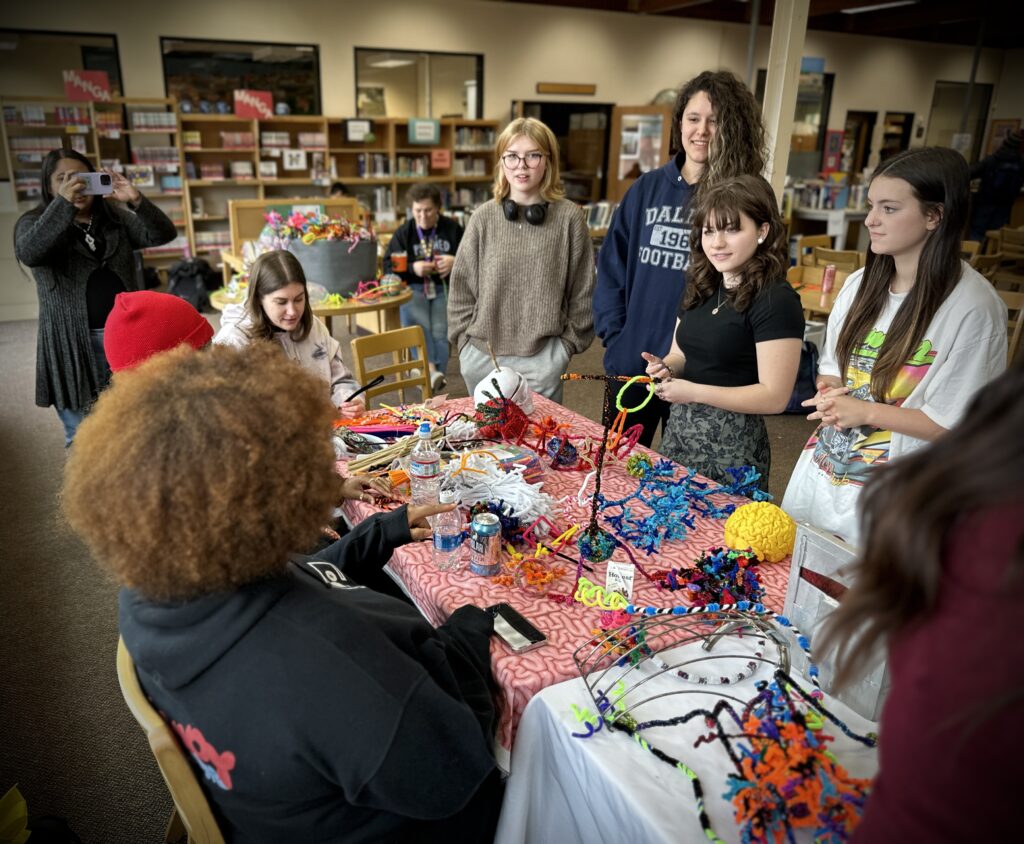
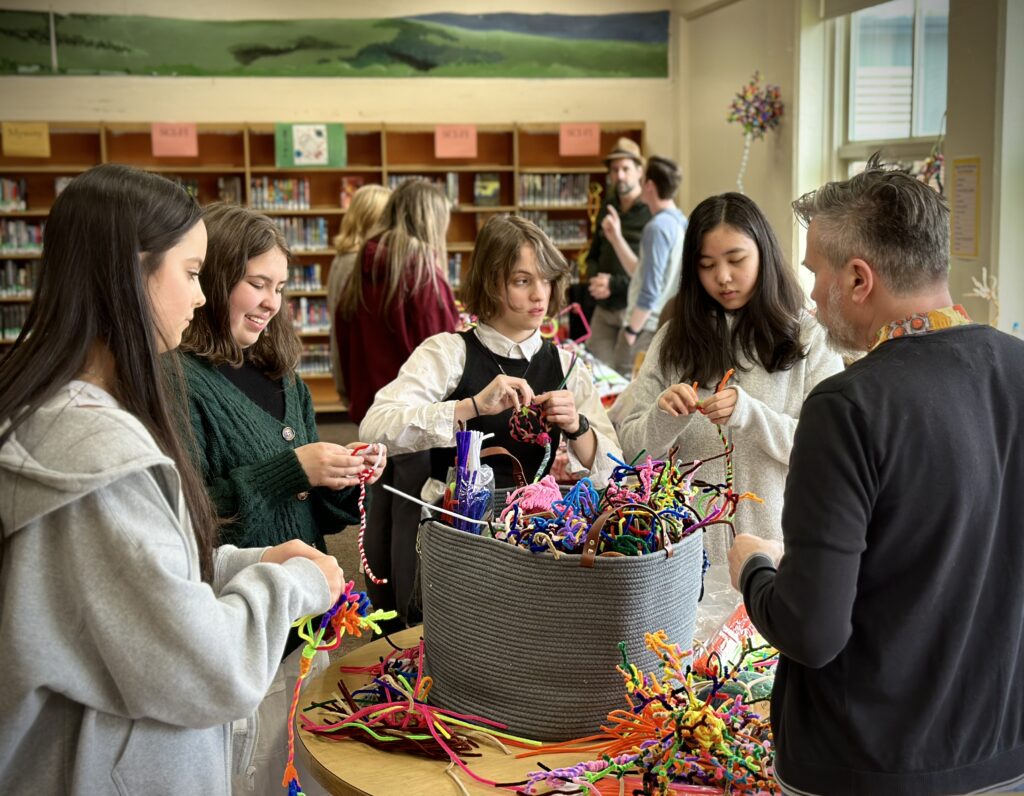
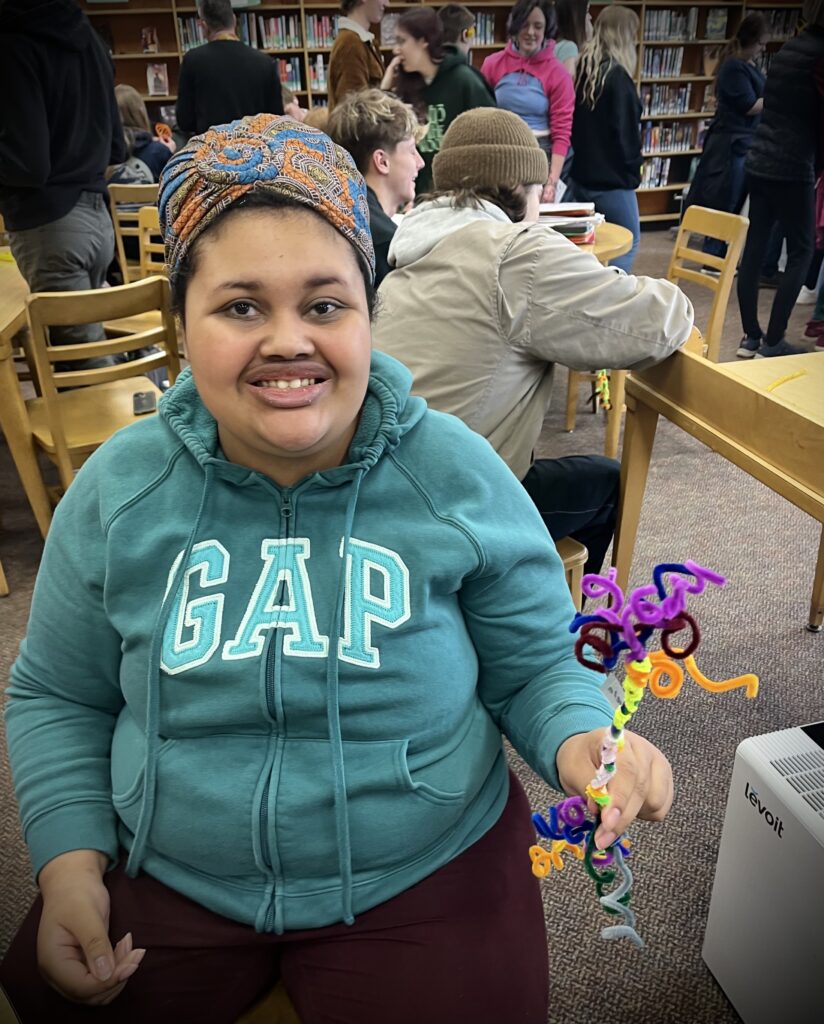
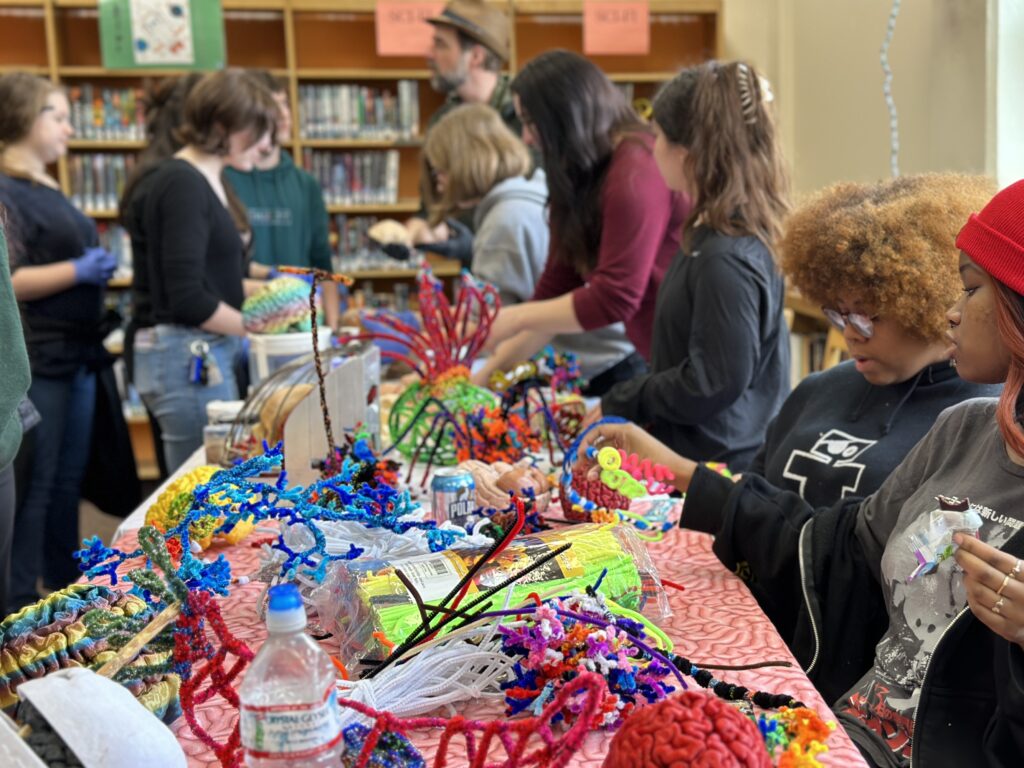
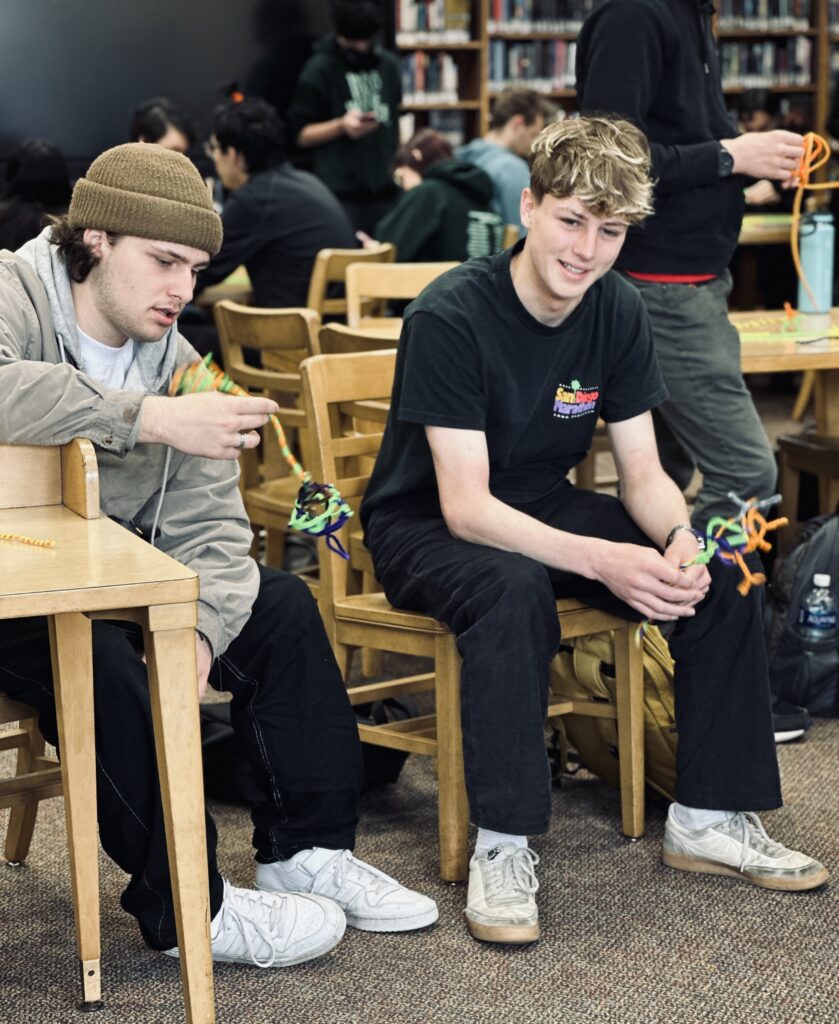
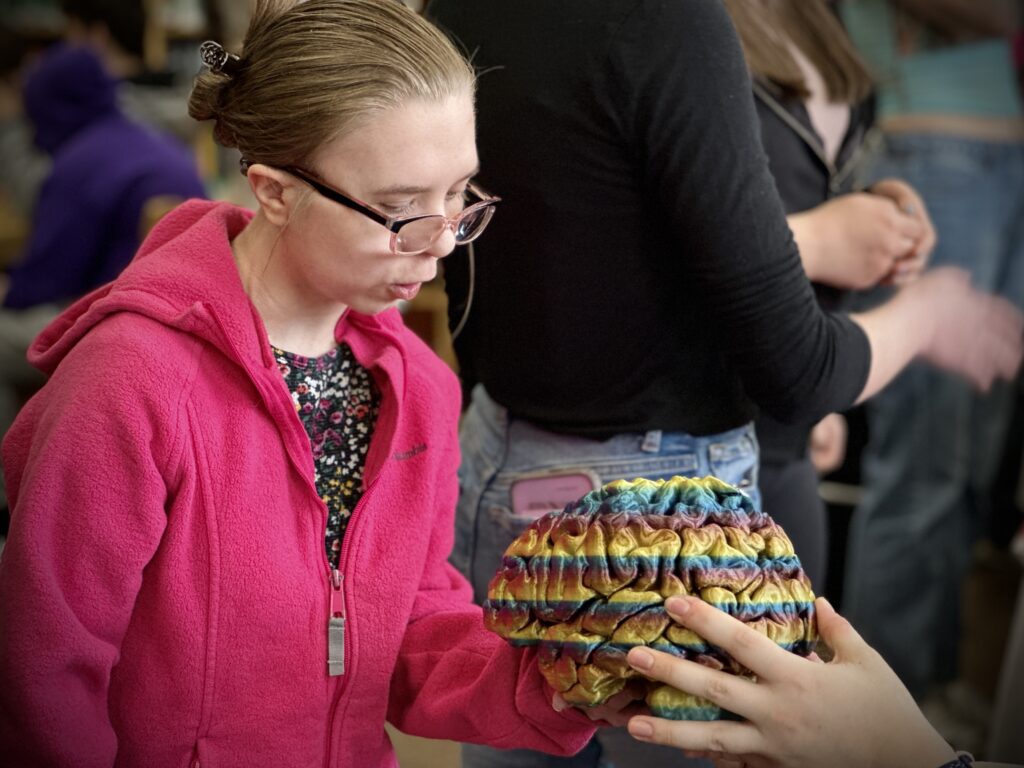
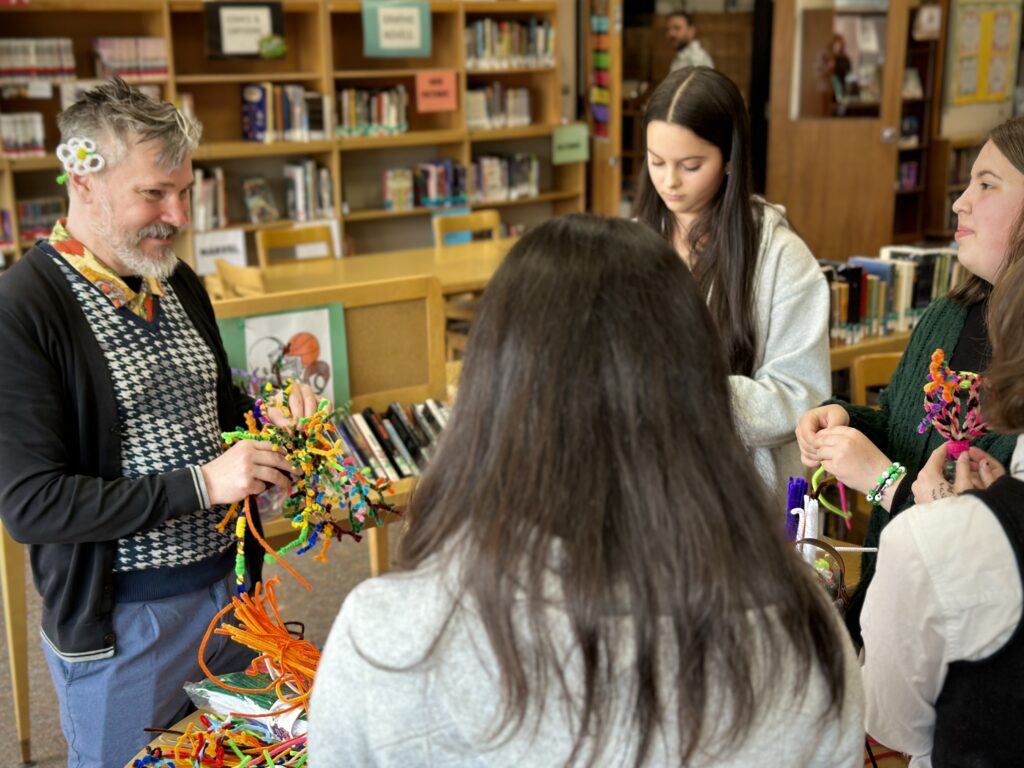
LEARN MORE: Role of Art Therapy in the Promotion of Mental Health: A Critical Review
LEARN MORE: Sewing Memories, & Brains
LEARN MORE: Art Therapy: A Complementary Treatment for Mental Disorders
LEARN MORE: Art Making as a Health Intervention
LEARN MORE: The lived experience of art making as a companion to the mental health recovery process
LEARN MORE: Art Therapy: An Underutilized, yet Effective Tool
LEARN MORE: Using Arts-Based Therapies to Improve Mental Health for Children and Young People
Once again our huge thanks to all the creative students, teachers and staff in Knappa and Astoria Public Schools, and to TRIO Clatsop, Roundhouse Foundation, Fort George Brewery, Y Dormitory, Peter Pan Market, Rosebriar Mansion, Good to Go and the Astoria Coop for welcoming our undergraduate and graduate volunteers to Oregon’s North Coast!
